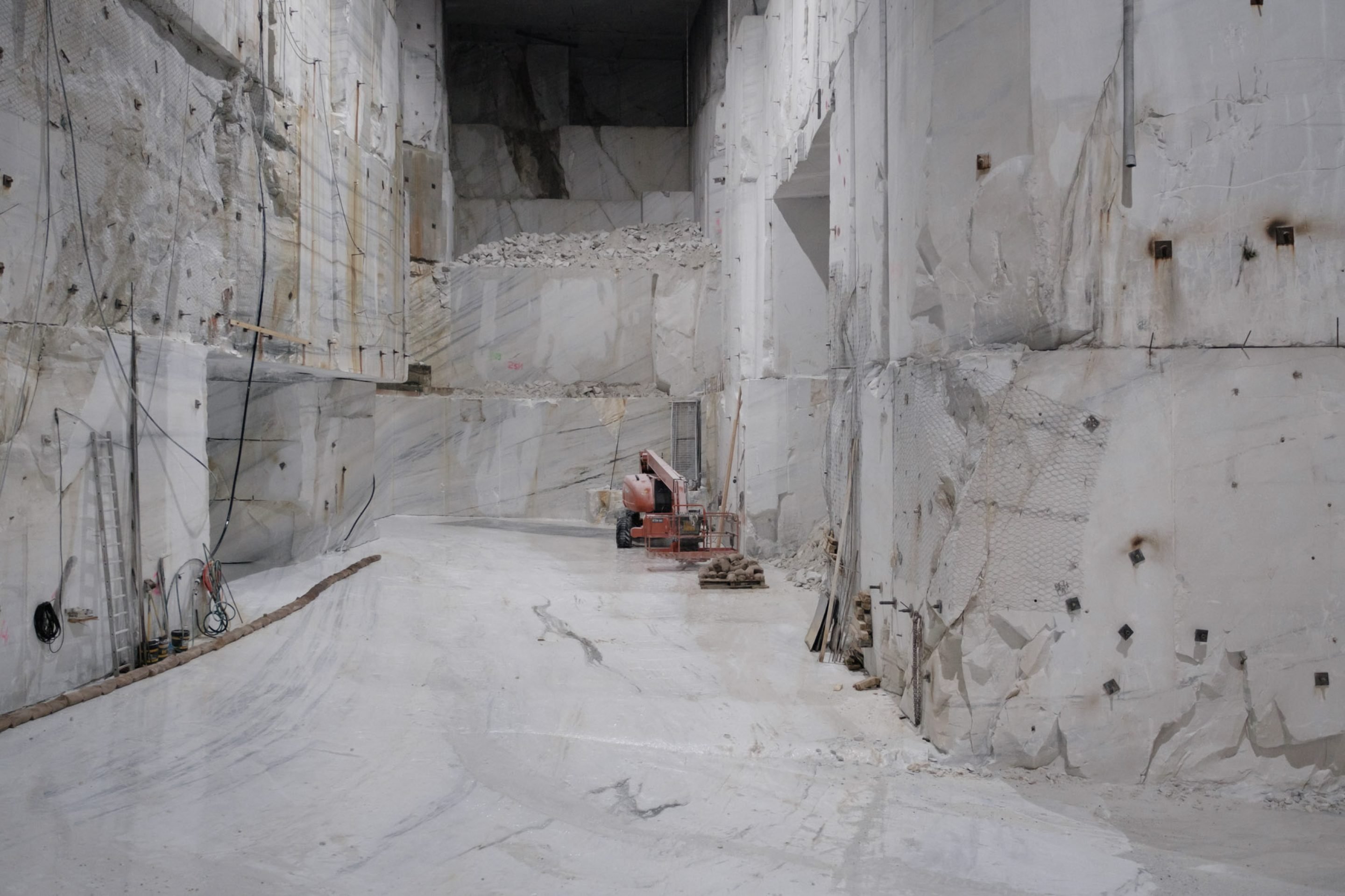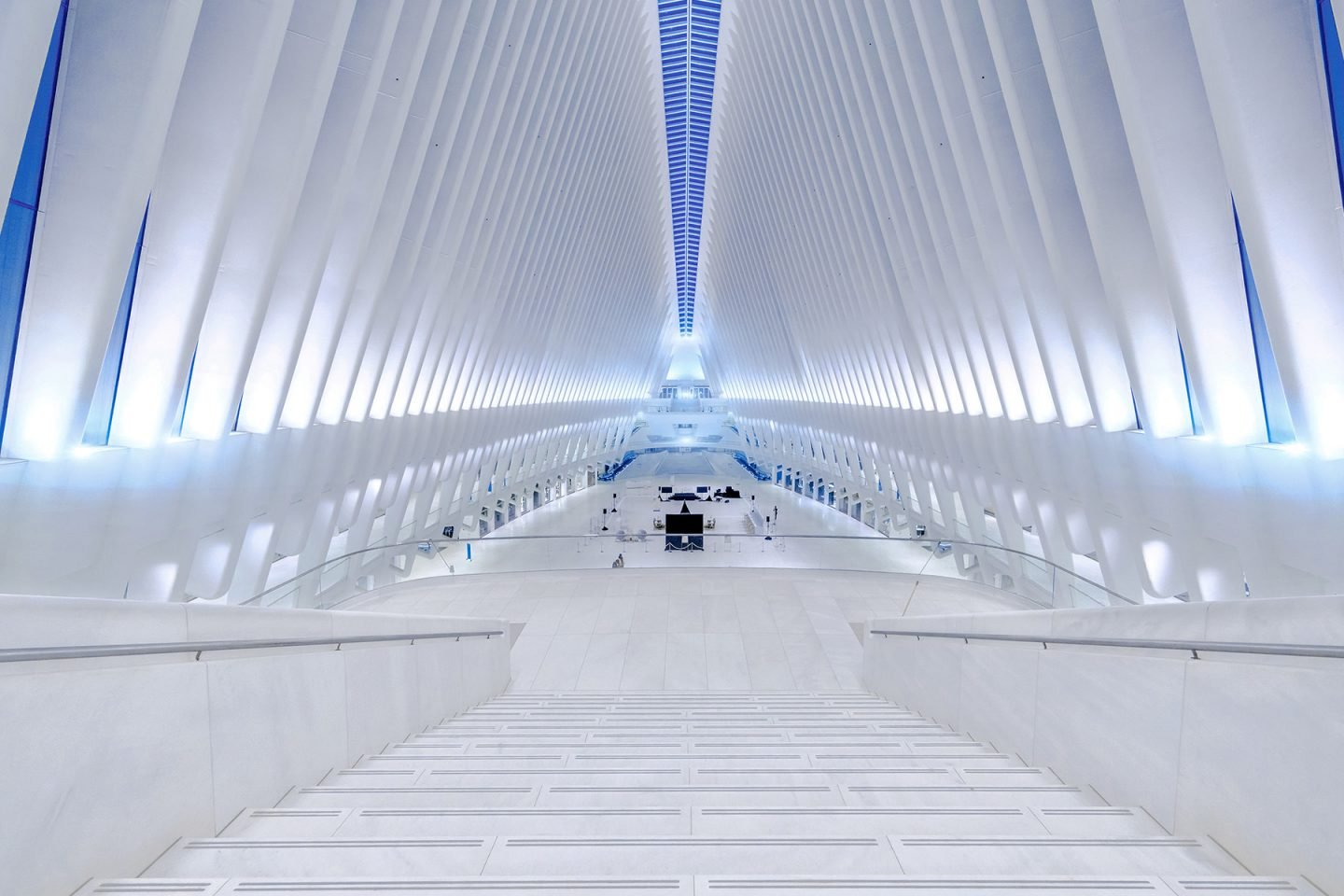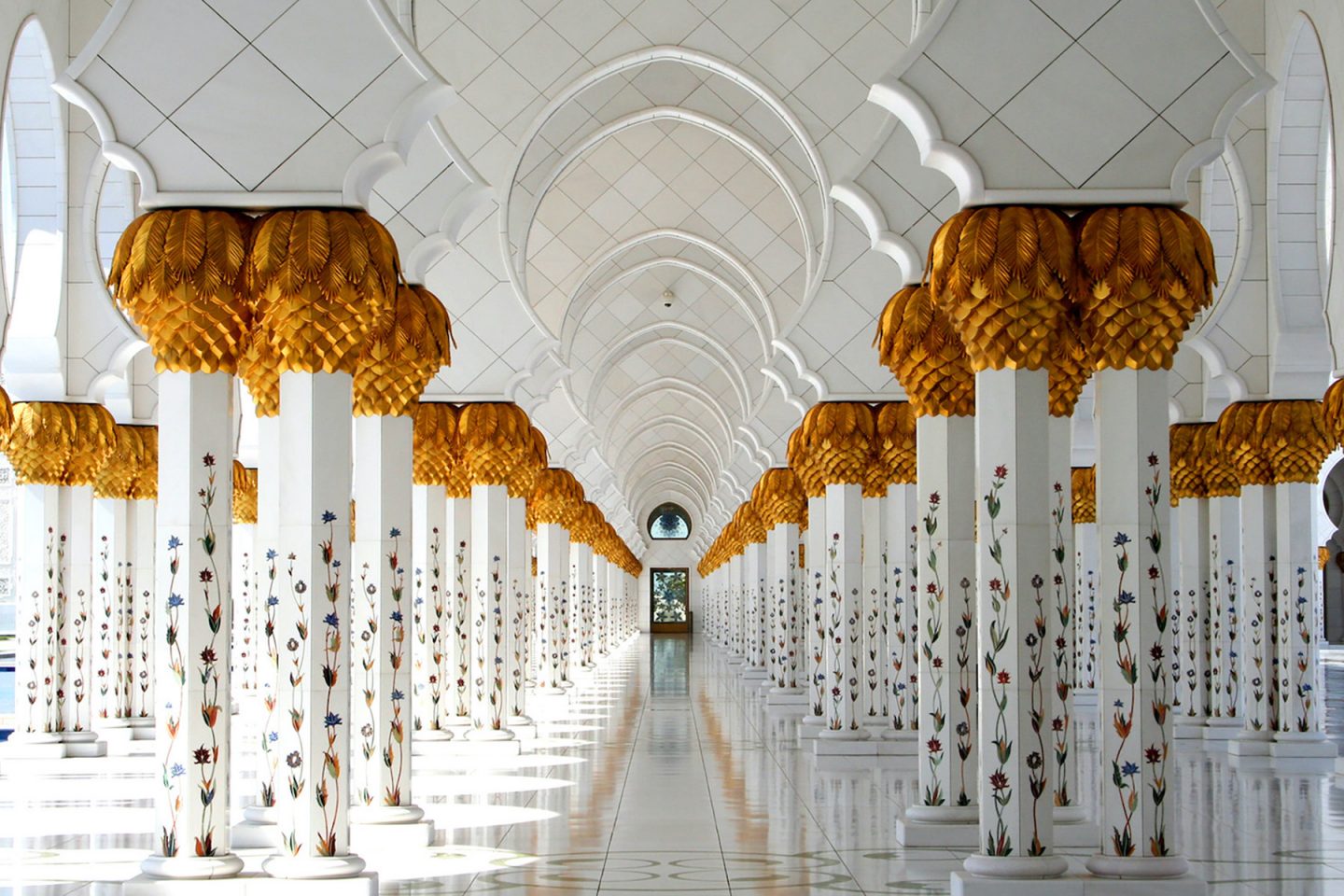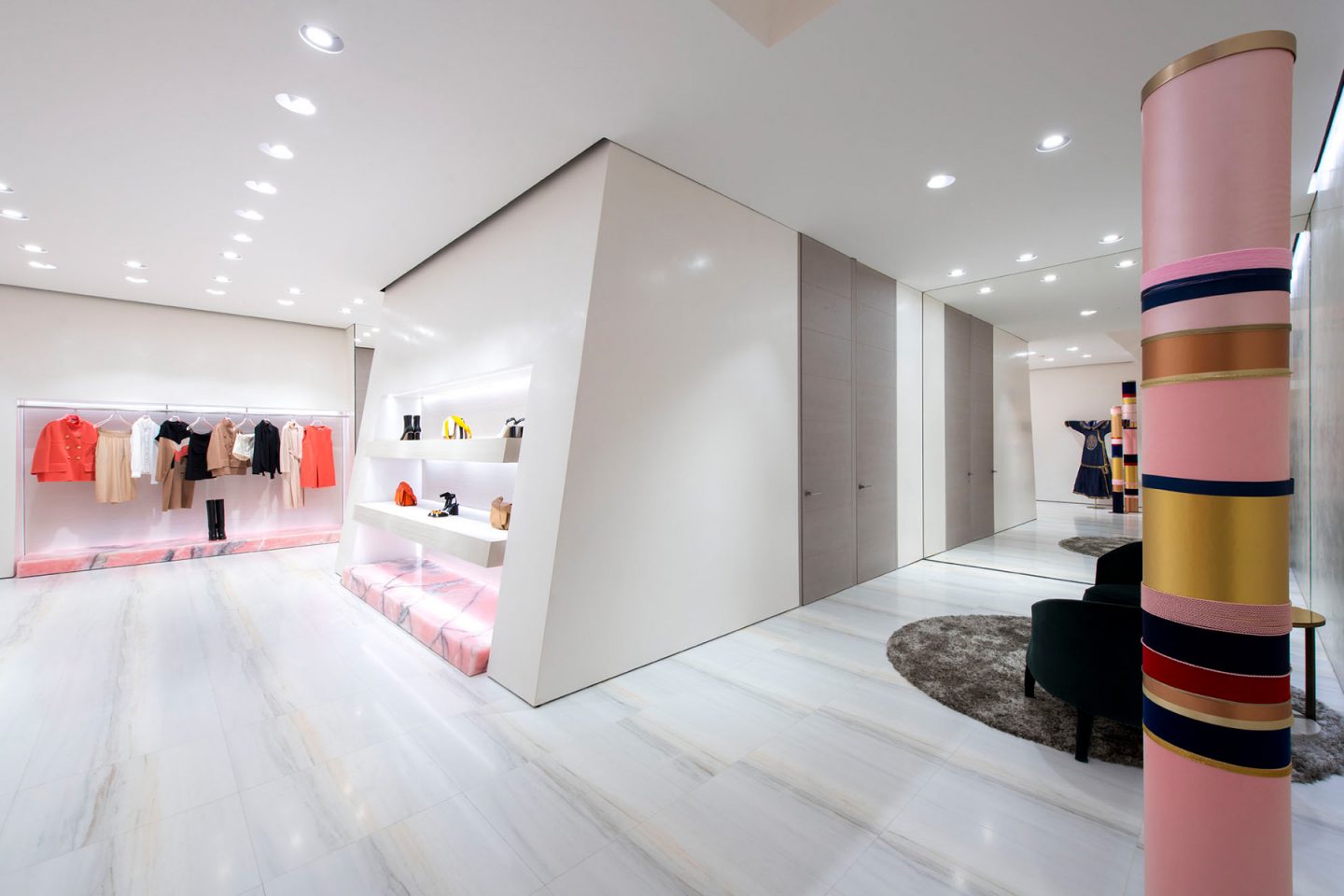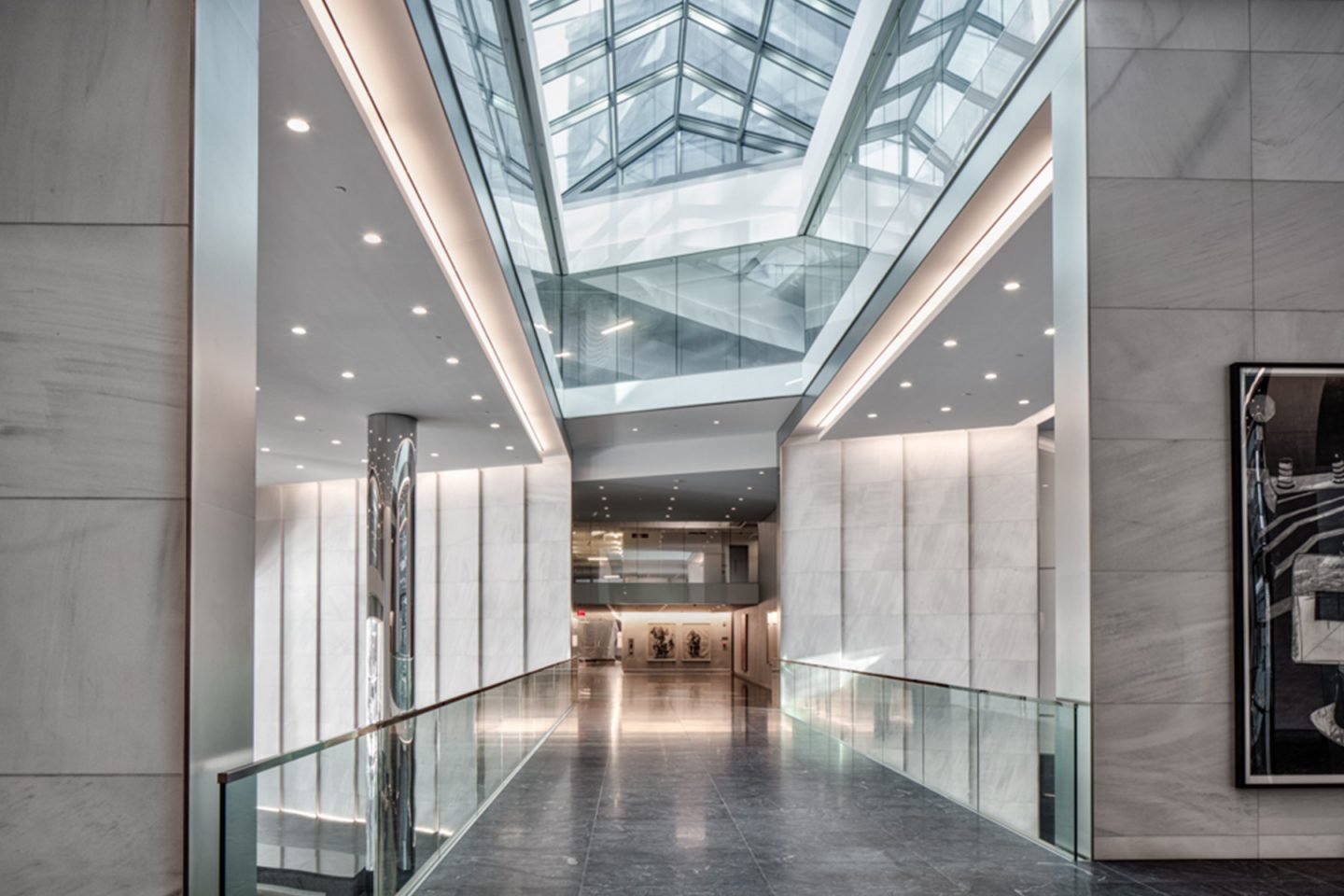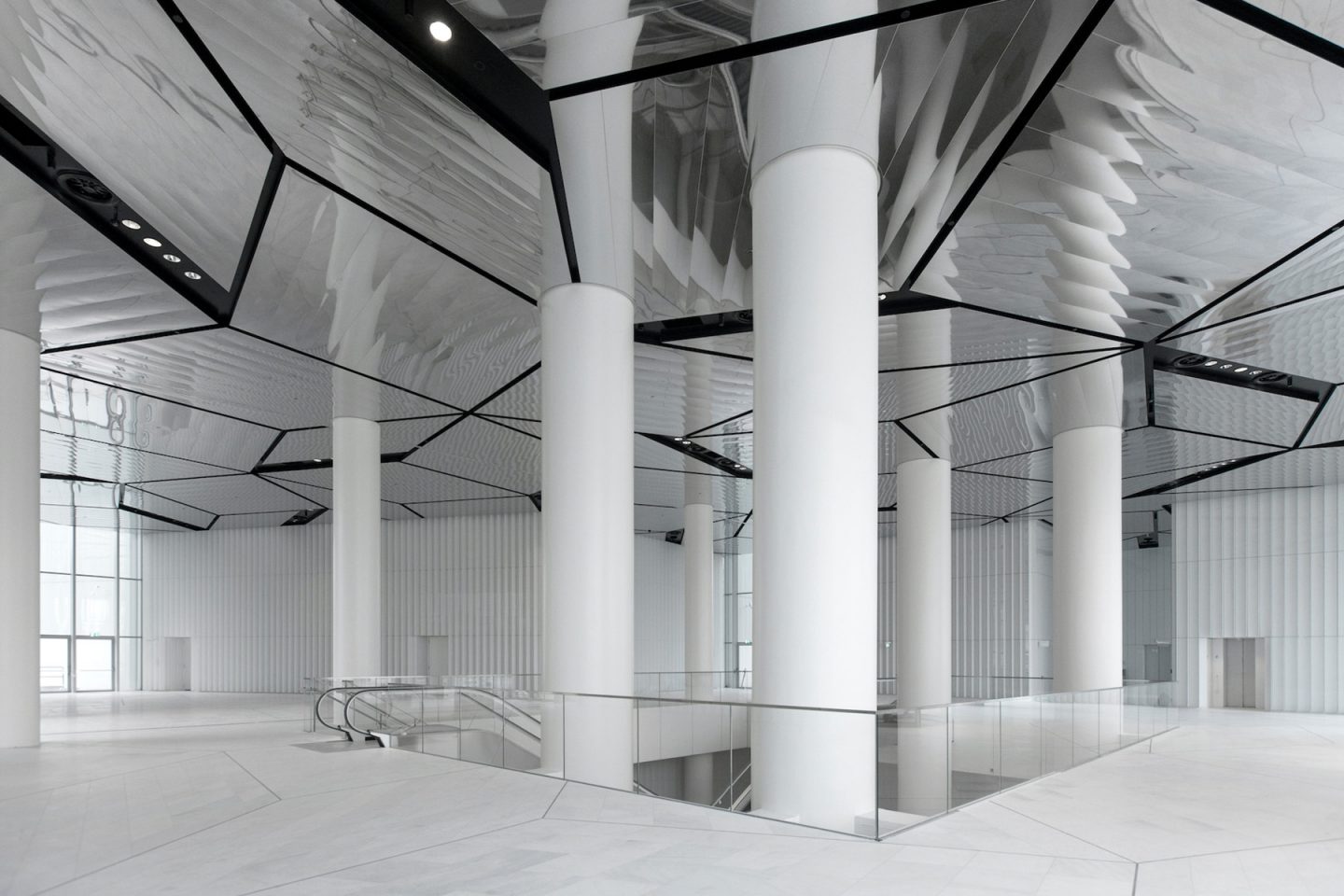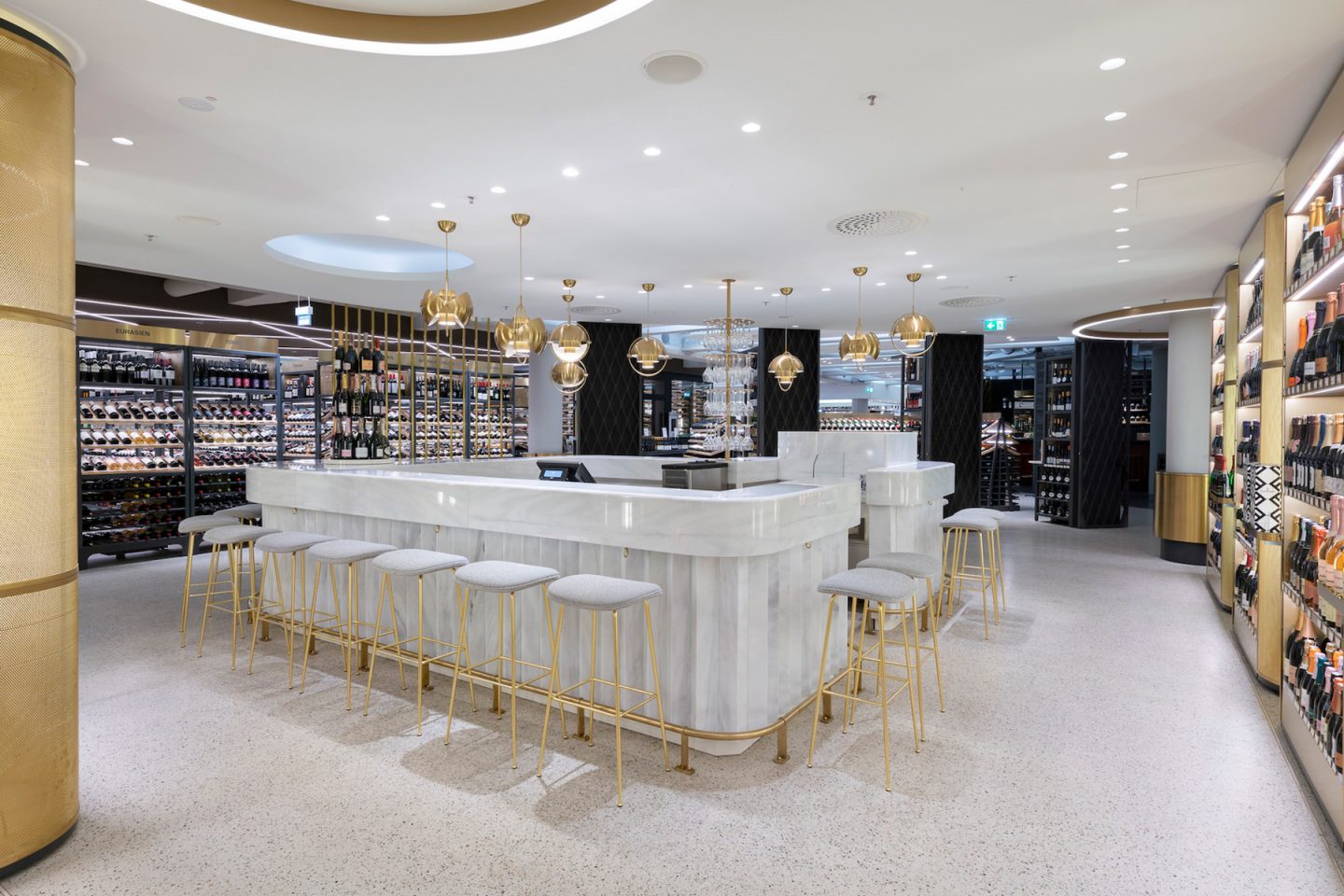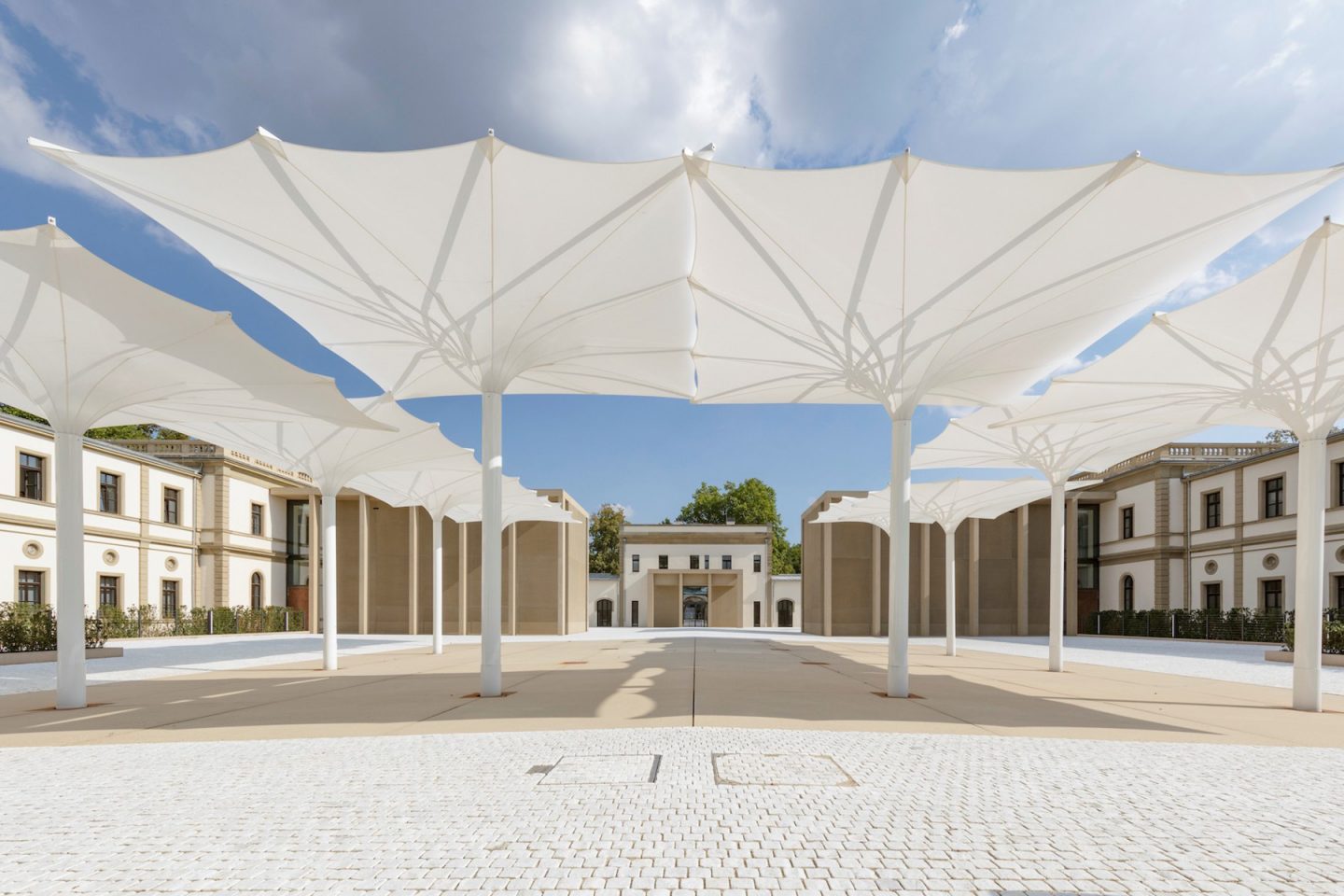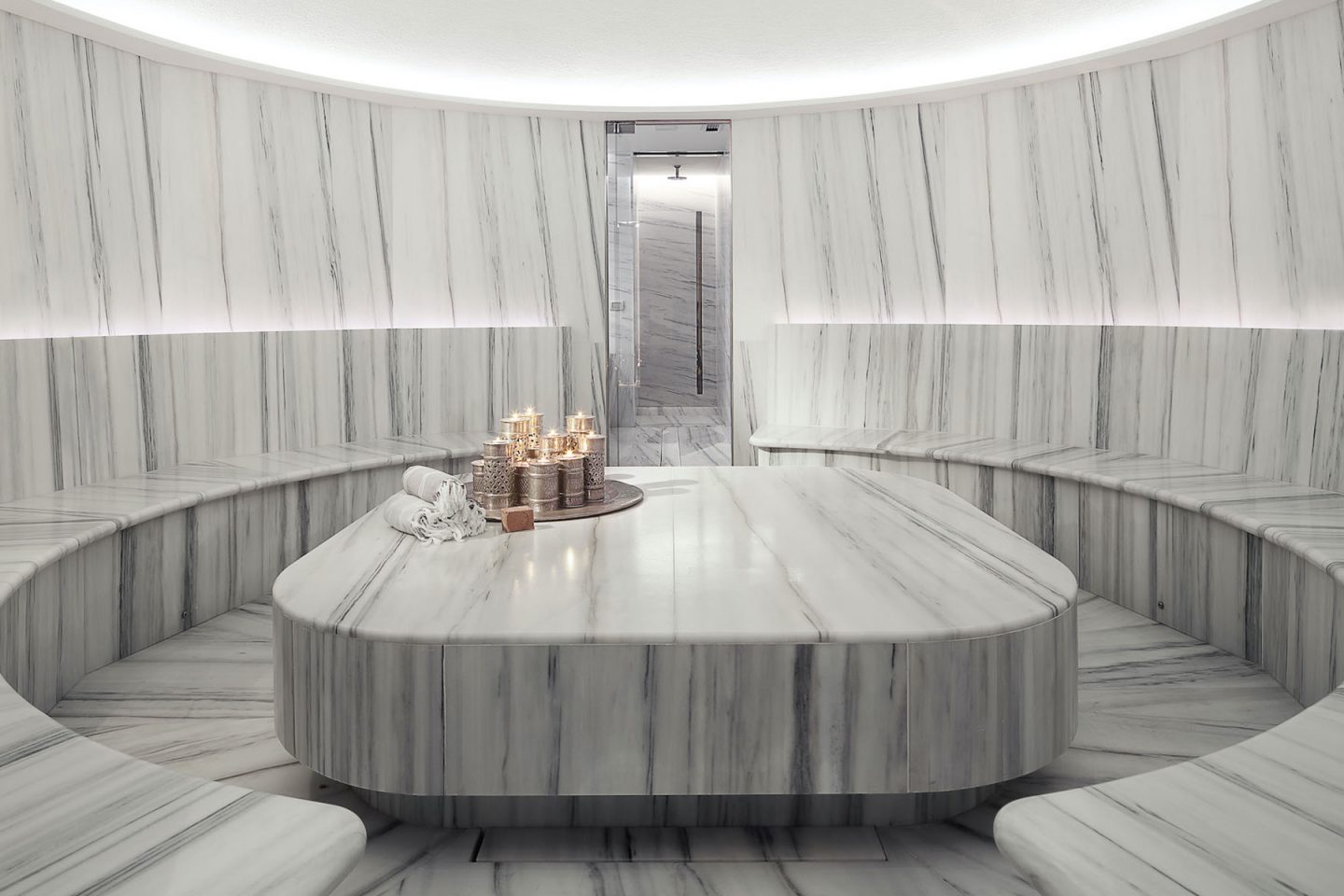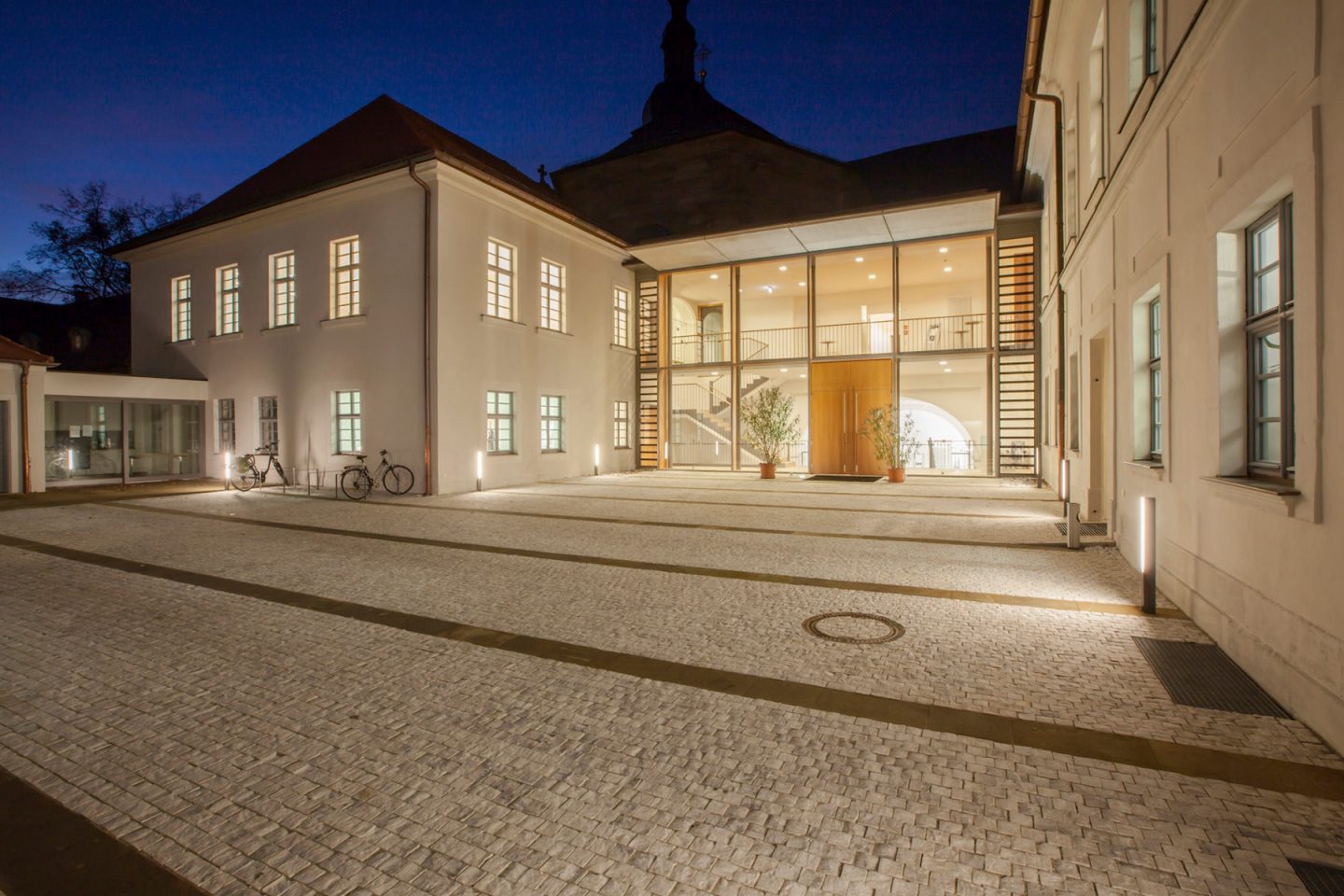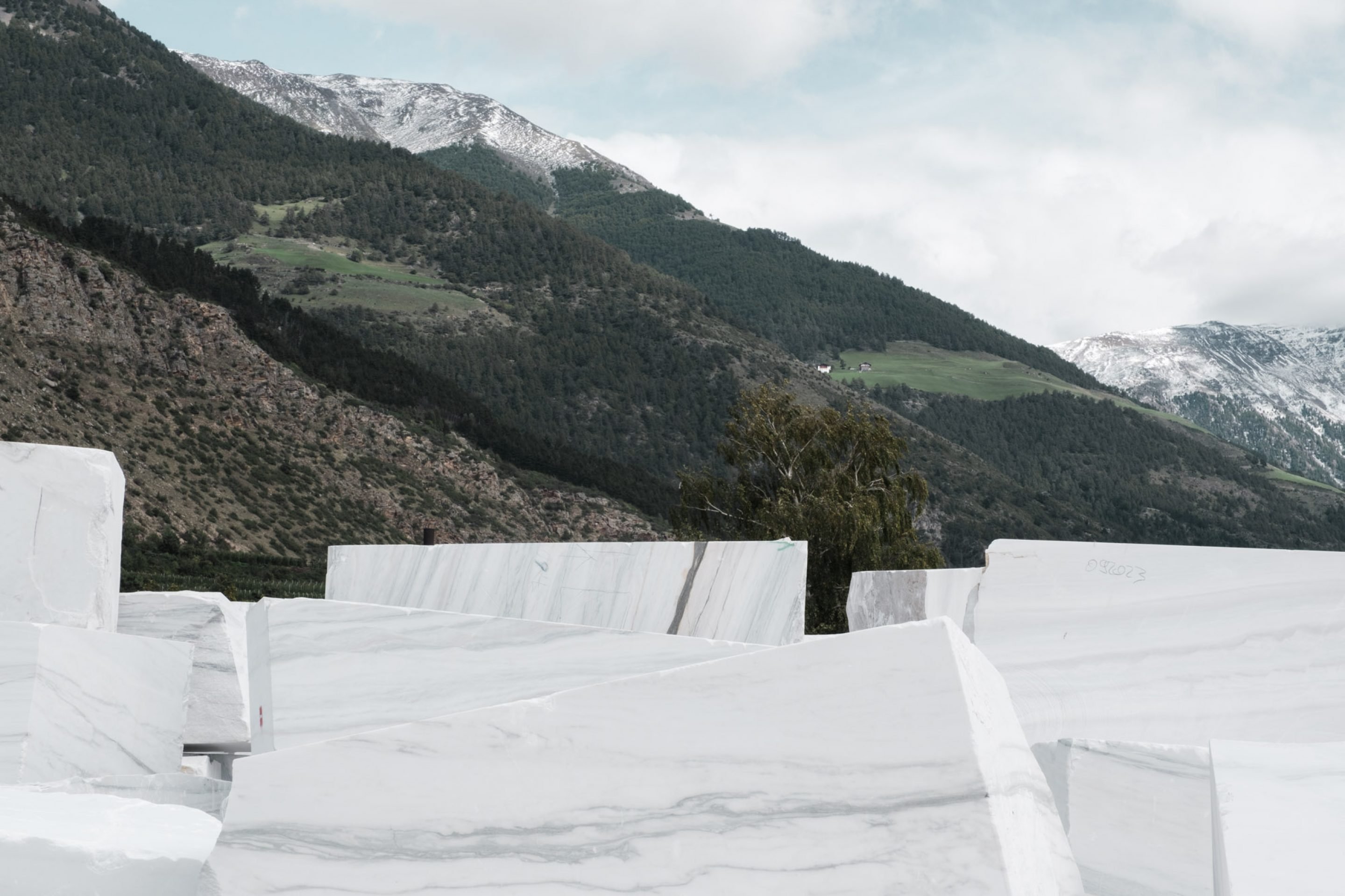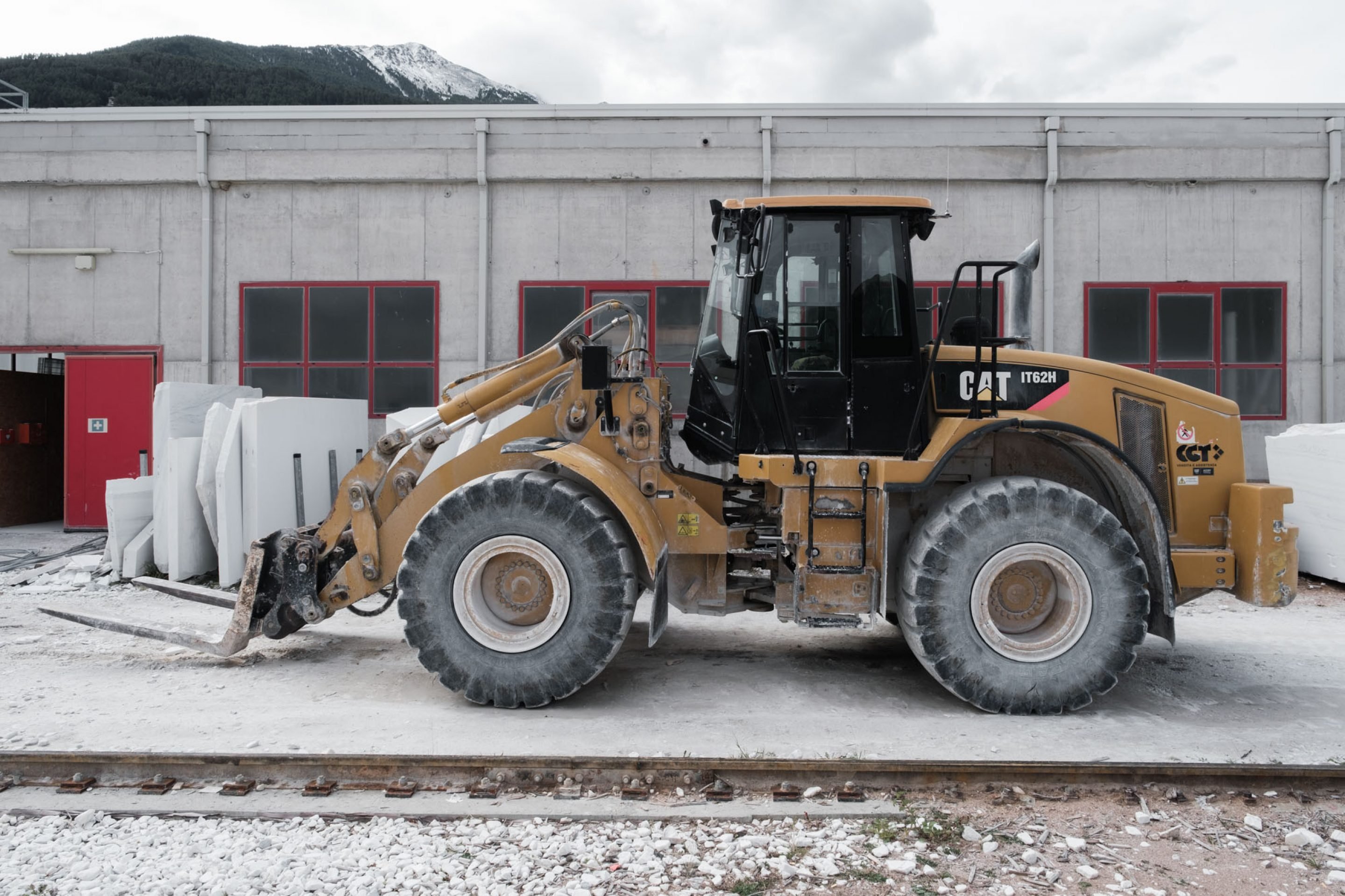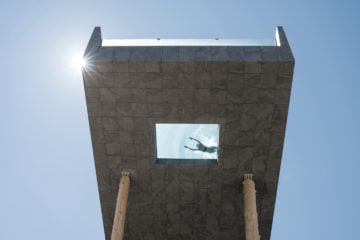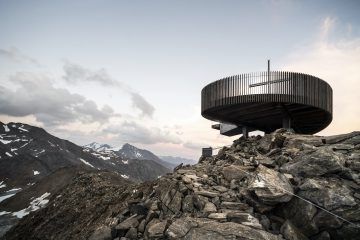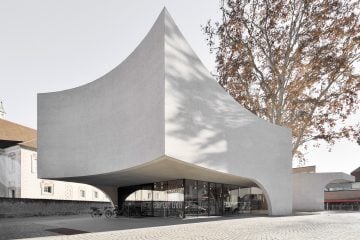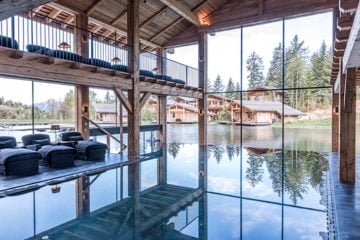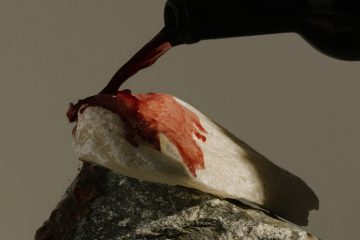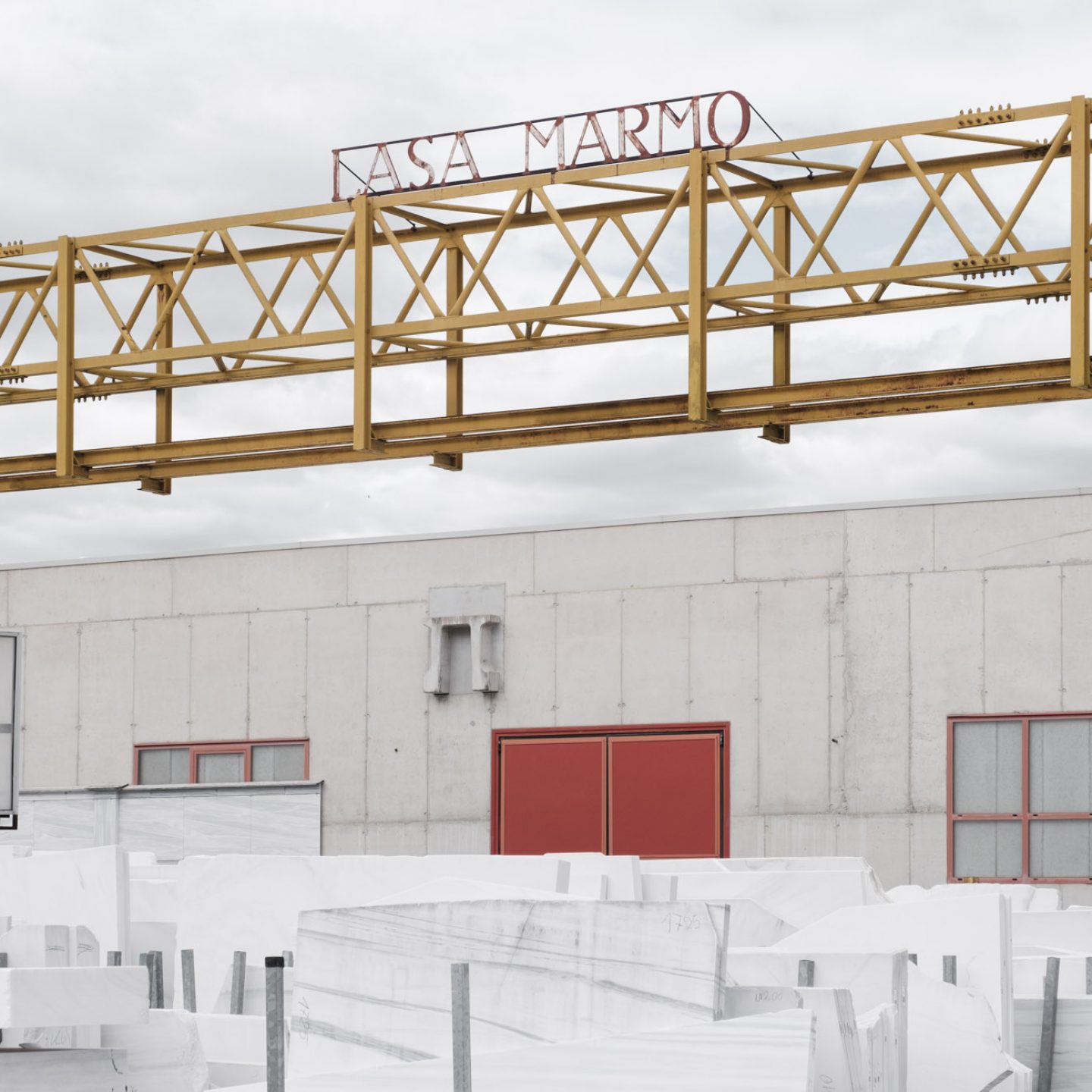
Inside The Sublime Marble Mountains At Lasa Marmo In South Tyrol
- Name
- Lasa Marmo
- Images
- Clemens Poloczek
- Words
- Steph Wade
Above the idyllic ‘white village’ of Laas, a small town in Italy’s autonomous province of South Tyrol, lies the White Water Quarry—where the purest, strongest, and most covetable marble in Europe has been mined for many centuries. Together with Visit South Tyrol, we flew to the region for a studio visit of the majestic Lasa Marmo, to learn about the story of their enchanting Italian Lasa marble.
Often referred to as white gold, marble is an extremely covetable, naturally occurring stone. Over the course of hundreds of millions of years, tiny marine organisms at the bottom of primordial seas were compressed by gravity into beds of calcium crystals. Over time as water bodies evaporated, the deposited remains formed what we know to be limestone: a mineral-rich, granular, and hard material. Intense pressure and heat from the earth forced the stone to metamorphose into marble. Over time the movement of tectonic plates around southern Europe caused the ancient seas to rise in the formation of the alps—up went the floor of the sea into the lands, forcing marble into the mountains. In the valleys of South Tyrol, the famed Lasa marble lies 1567 meters above sea level, among some of the highest located quarries in Europe. The massive marble veins can be seen from the valley, giving the Marble Mountains their nickname.
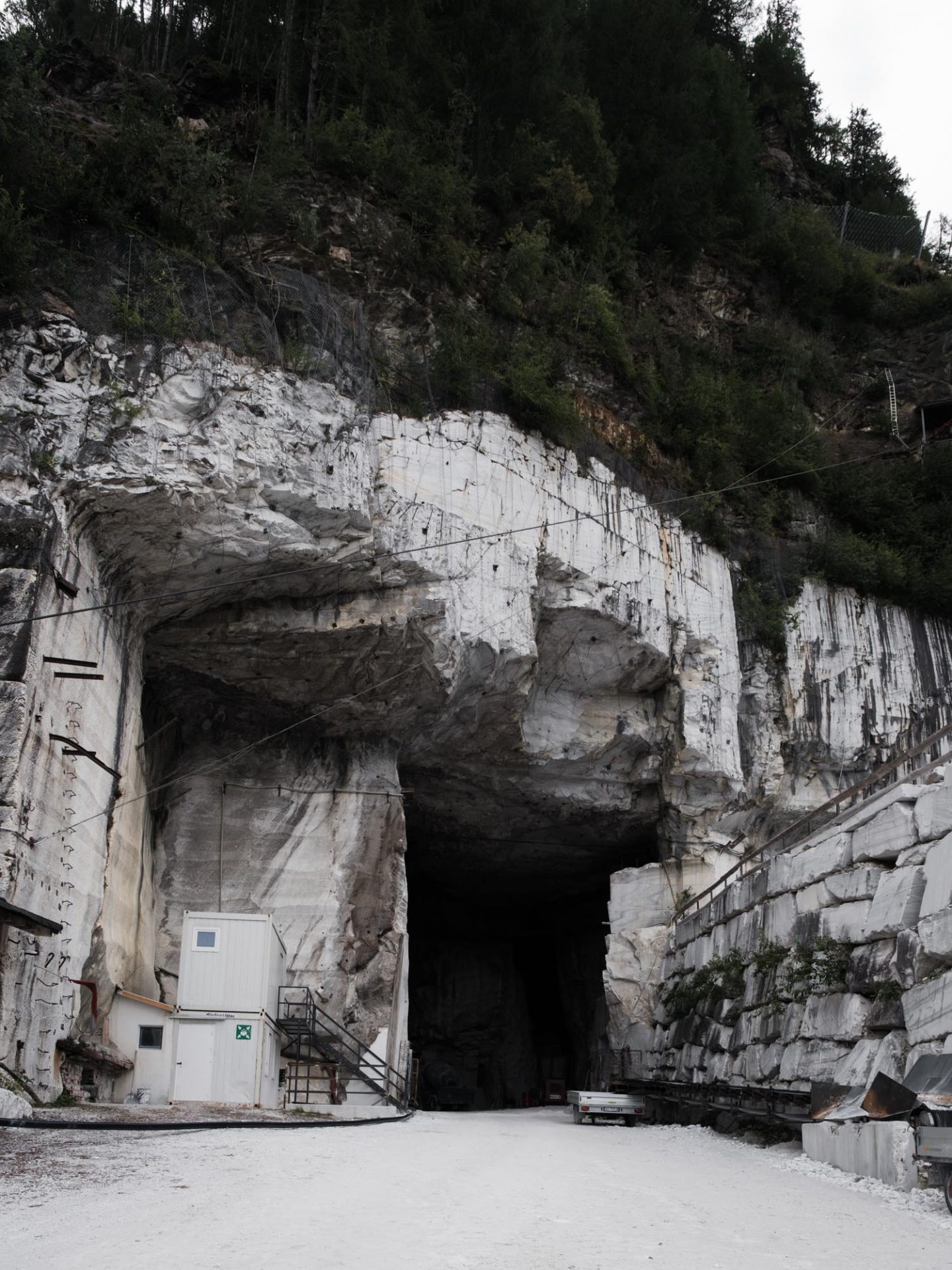
The entry of the quarry. This hole is where all marble is extracted from.

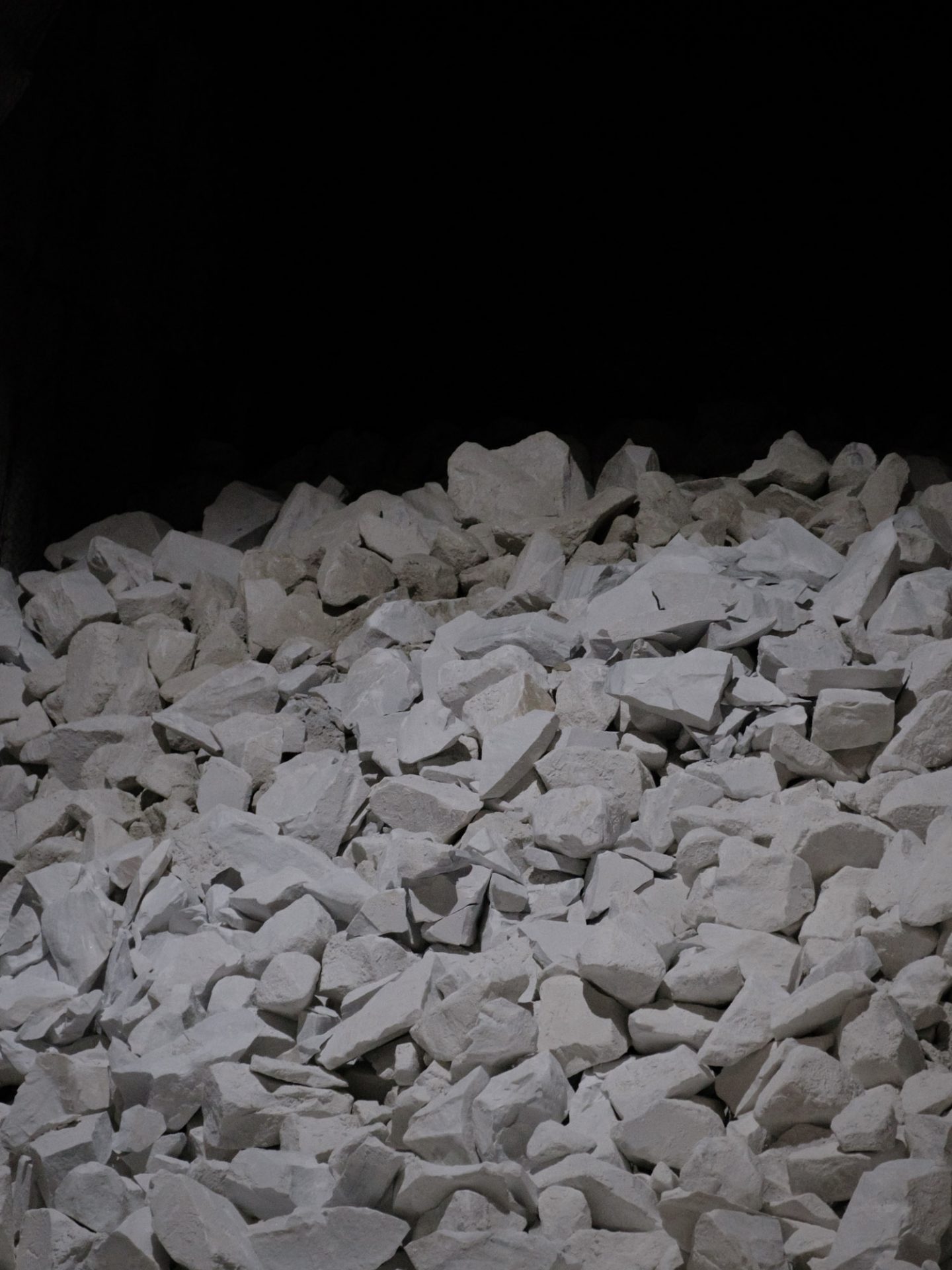
Massive marble veins can be seen from the valley, giving the Marble Mountains their name.
Humanity has been using marble in art and sculpture for hundreds of years (the Renaissance statue of David by Italian sculptor Michelangelo remains one of the most recognizable and visited works of art in humanity’s history). Today, the demand for marble as a building material is staggering—according to Business Insider, the market as a whole is worth over 1.1 billion USD, producing over four million tons of marble every year, with 13,000 people involved in its extraction. Lasa marble, known for its exceptionally pure, sometimes snow-white color, is quarried in the Stelvio National Park by Lasa Marmo. Unlike its relatives in the marble family, such as the white-gray marble found in Italy’s larger quarries like Carrara—the marble used by Michelangelo—Lasa has a 20 per cent higher hardness coefficient. Put simply, this means it is higher quality than all other marble because it is stronger, more robust, and more weather resistant. No wonder then that it is the preferred choice among designers and architects around the world.
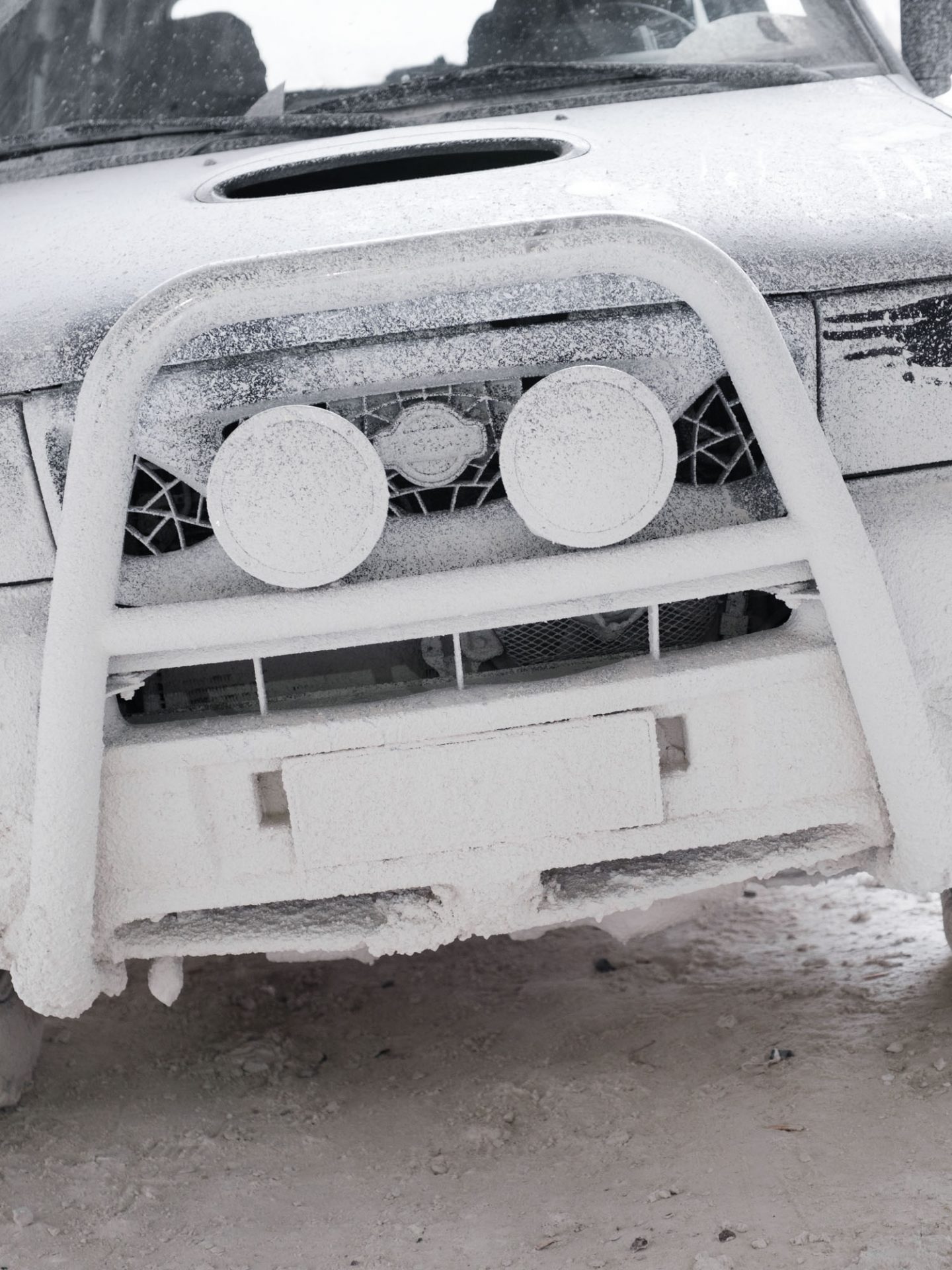
Marble dust covers everything in the quarry, from cars to machinery.
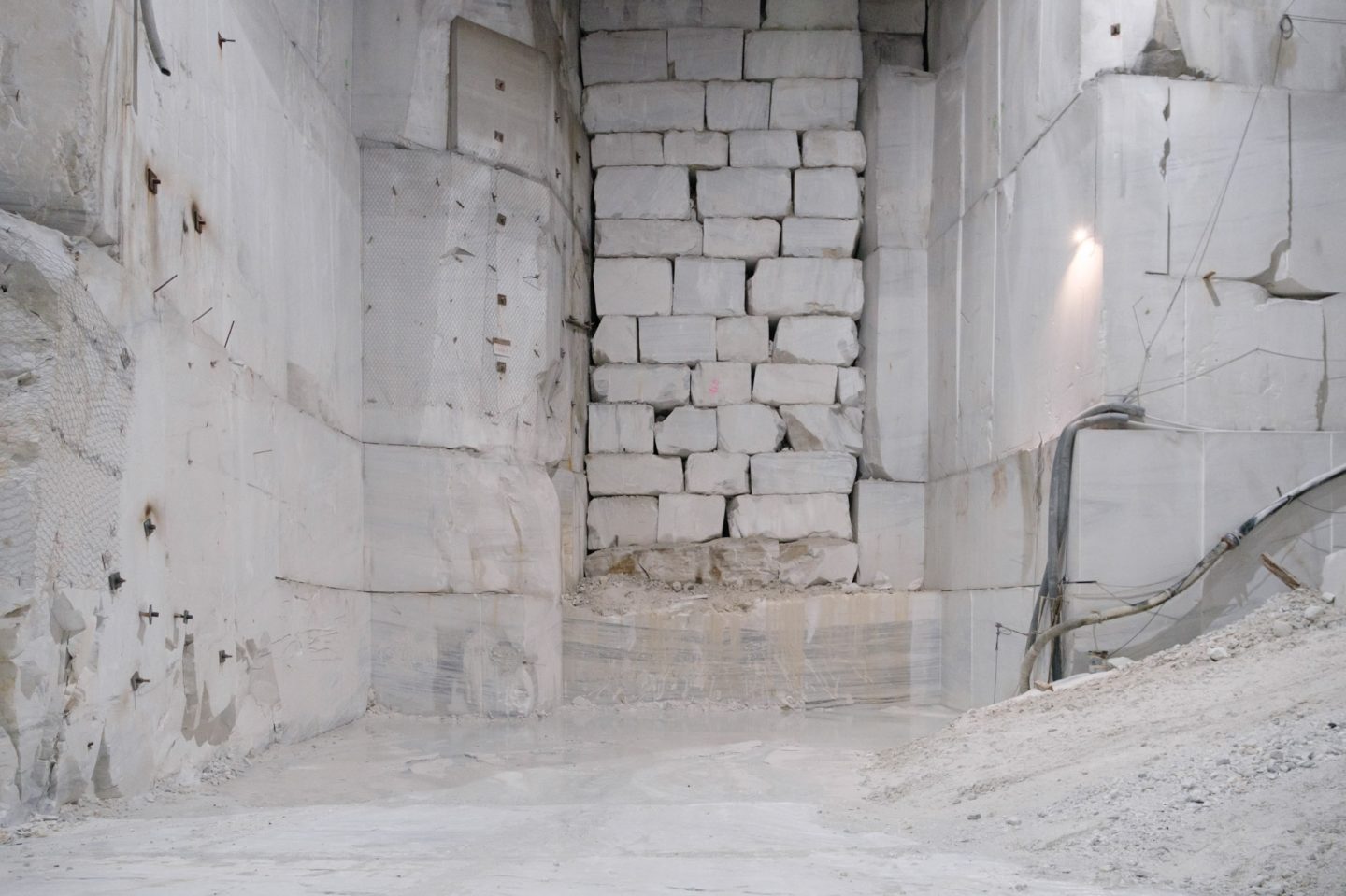
Stacked marble blocks made from offcuts inside the Lasa Marmo quarry.
Marble is still used artists and sculptors, but today mostly in large-scale projects like hotels and monuments.
Lasa Marmo is the sole producer of this all-white stone variant, and today, business is booming in this marble-rich area. It is no longer used only in small batches for artists and sculptors, but in larger volumes for enormous projects like statement buildings, hotels, boutiques, and monuments. In 2017, the company finished producing for the World Trade Center Transportation Hub in New York’s Manhattan, providing 40,000 square meters of marble for the new subway station at Ground Zero. Lasa Marmo’s marble lines the floors and walls of the dazzling Sheikh Zayed Grand Mosque in Abu Dhabi, the iconic Berlin department store Kaufhaus des Westens (KaDeWe), and in government buildings, hotels, and high-end boutiques all across the world; it even forms the crosses for the tombstones of US military cemeteries from the Second World War.
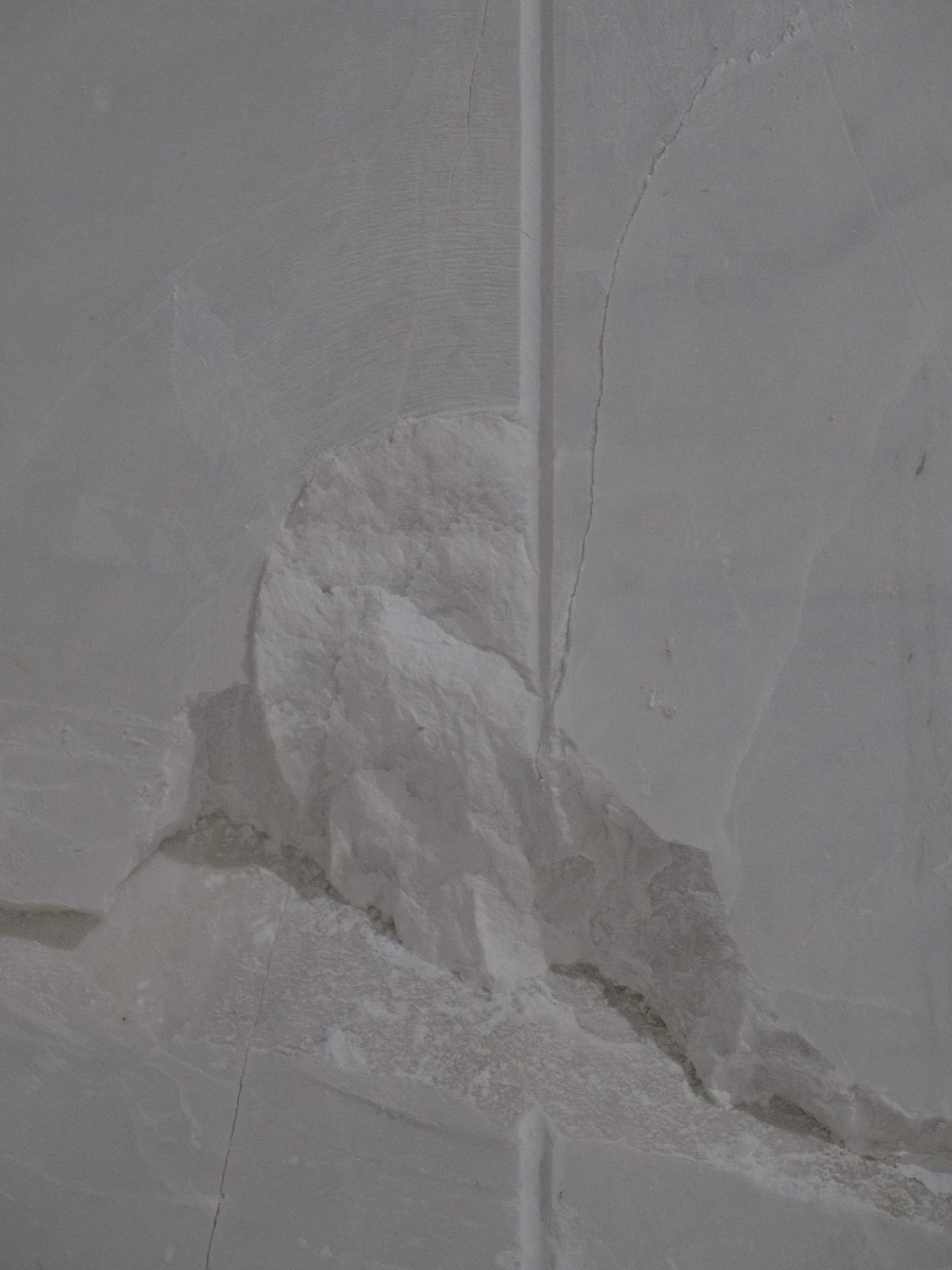
Lasa Marmo is the sole producer of this all-white stone variant.
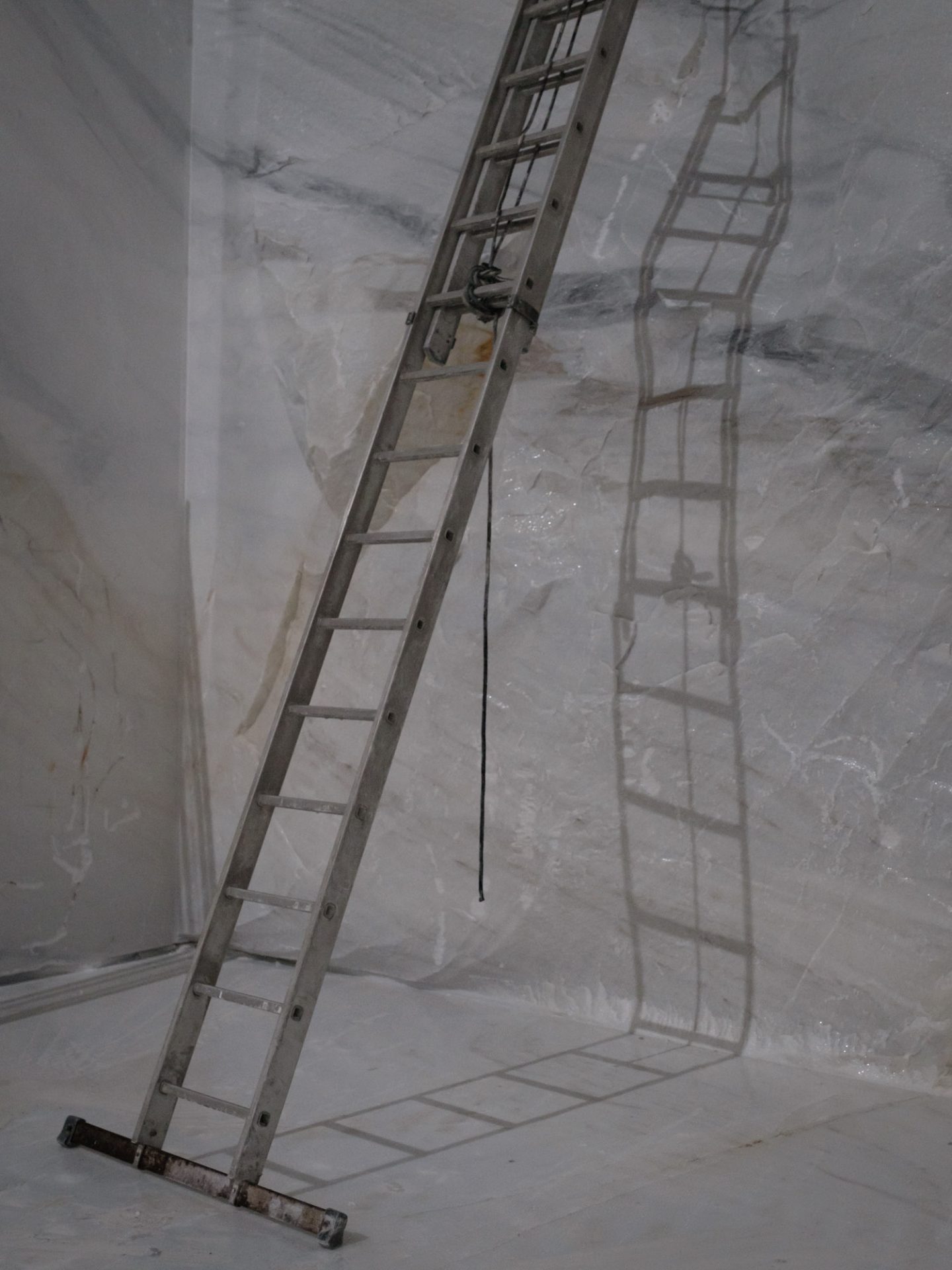
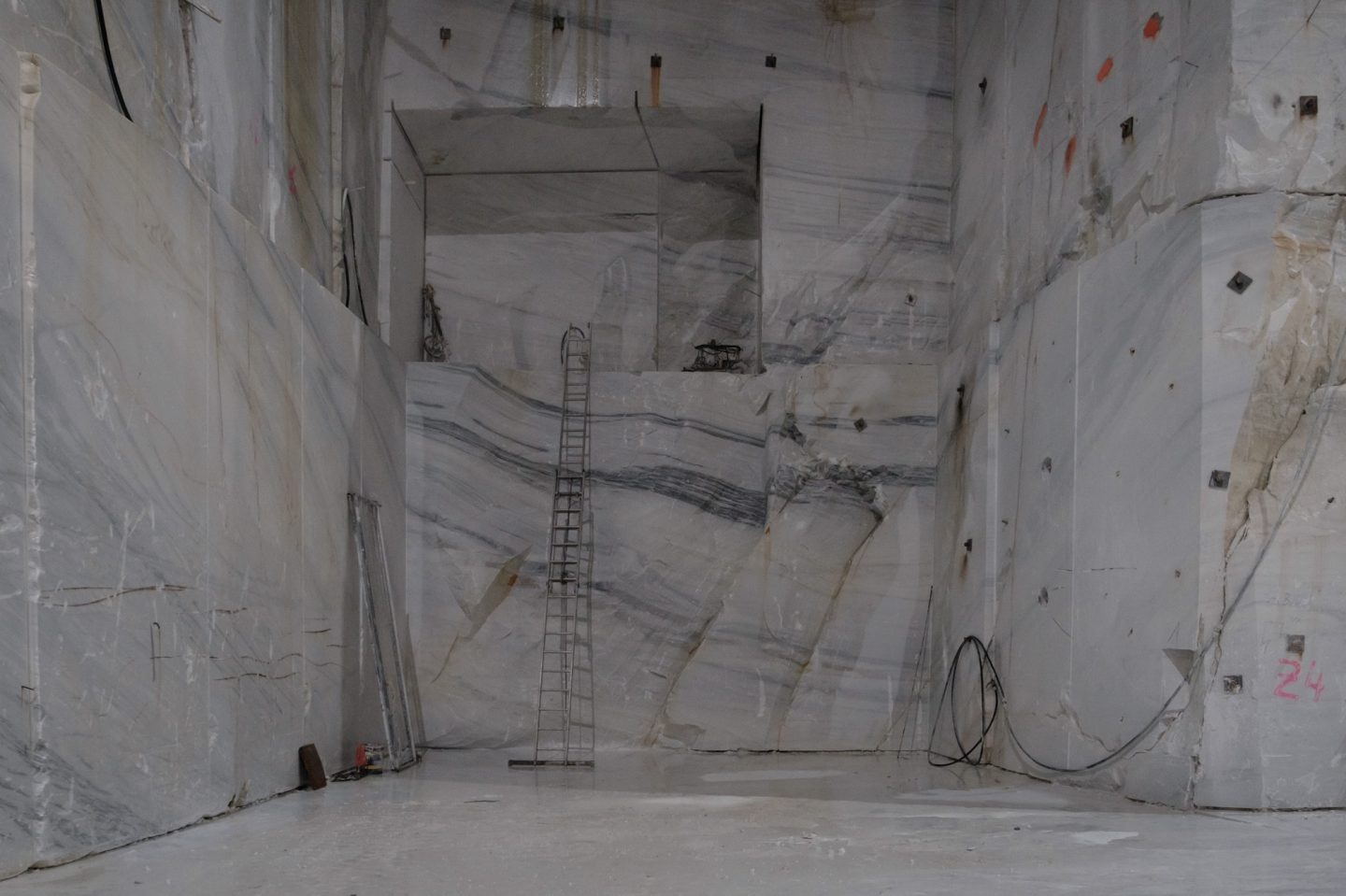
Inside the quarry, marble is everywhere. The floor is wet and shiny because of the water that permeates the area.
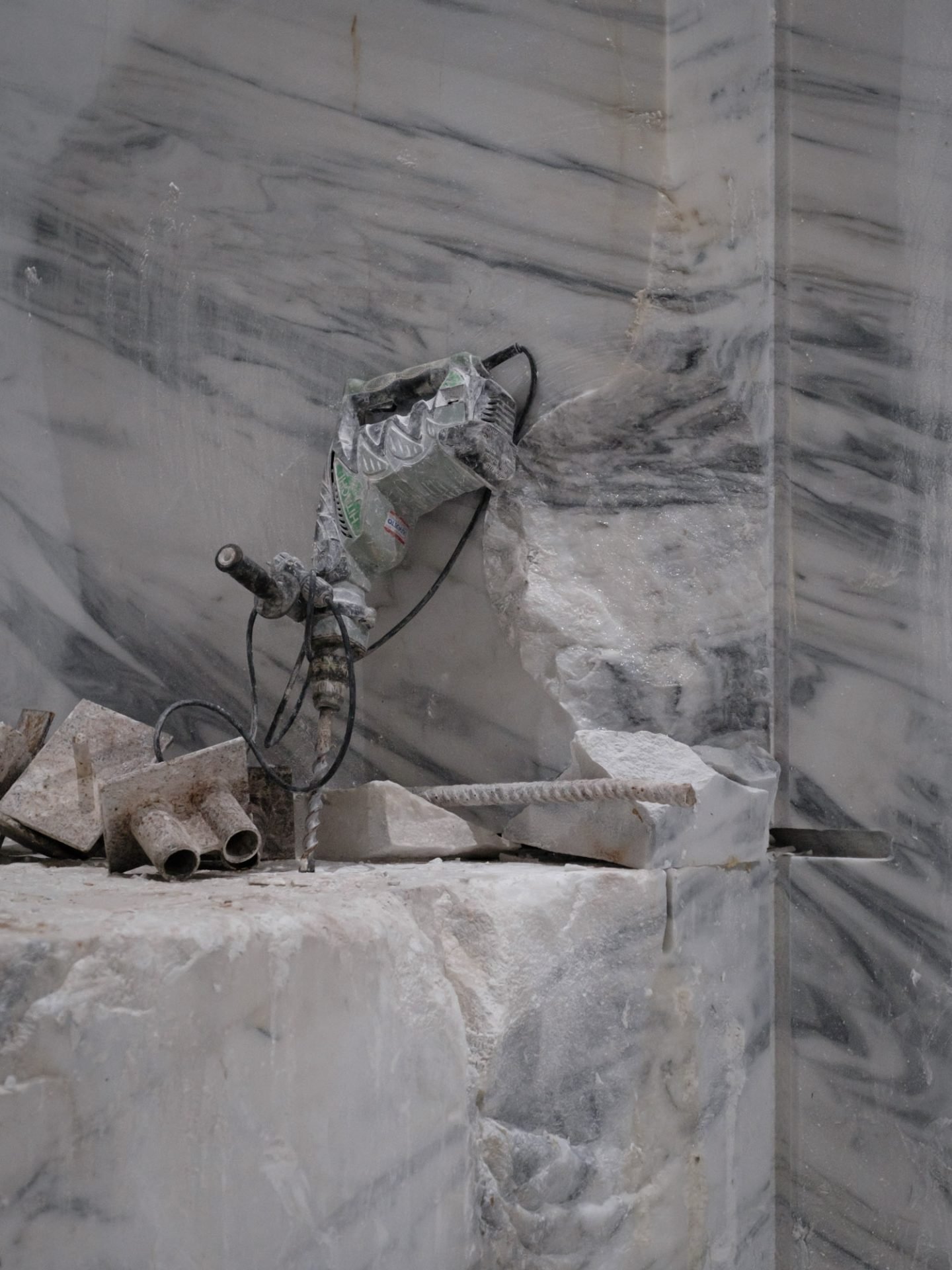
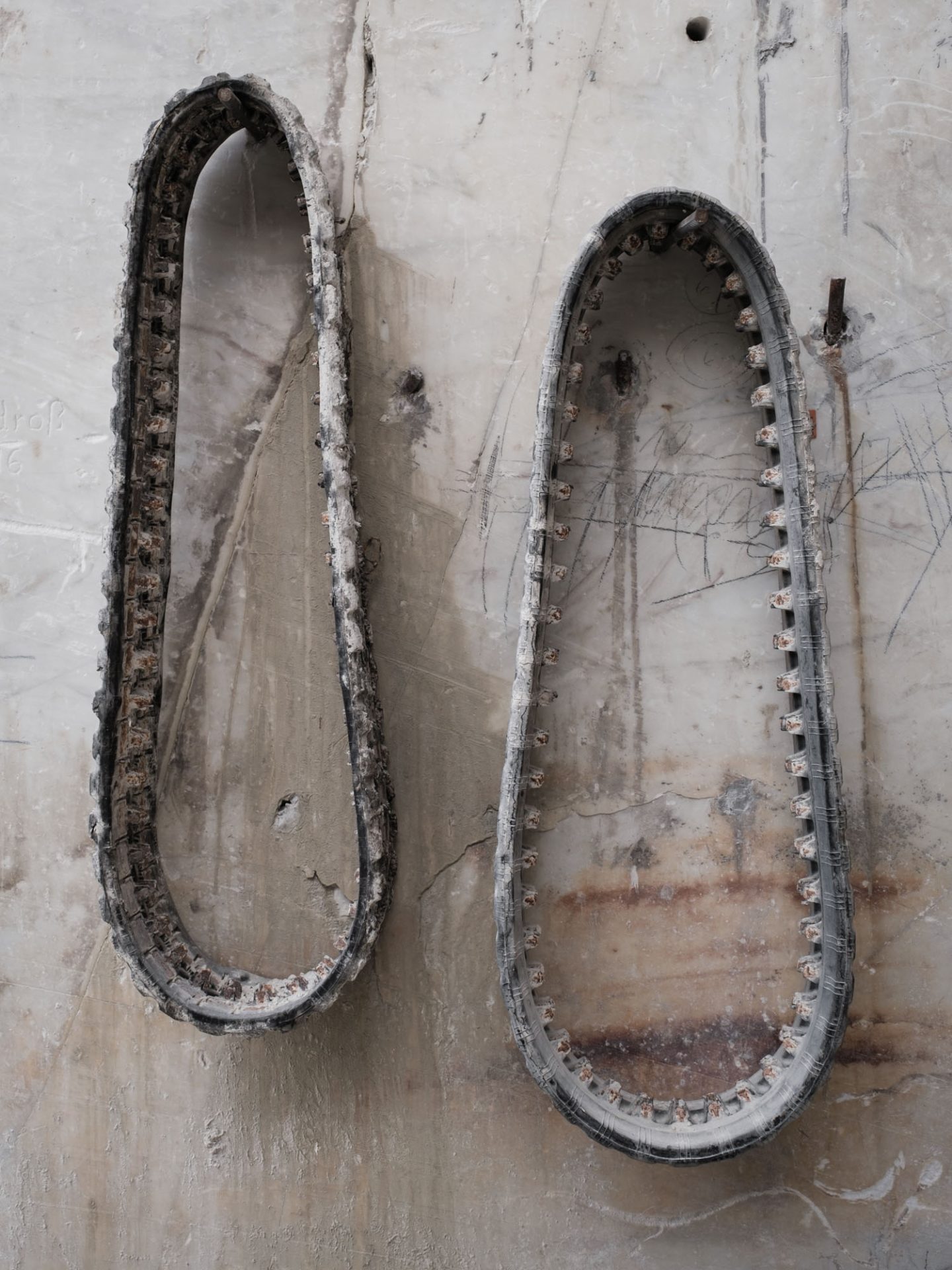
Lasa Marmo Projects
Despite its worldwide recognition, Lasa Marmo is a small company—comparatively to the multinational corporations that dominate the marble sector. In 1883, stonemason and marble pioneer Josef Lechner began leasing the White Water Quarry from the municipality of Laas, using open-cast mining to extract the marble with the help of 100 straining men. Iron picks and wooden wedges were driven into chunks of the marble, and dynamite would rip it from its place. By 1930 the ‘Laaser Marmorbahn’, or Lasa Marble Railway Line, was put into operation, enabling groundbreaking sustainable transport of the marble blocks from the quarry to the processing plant in the valley. This old train is still on site today.
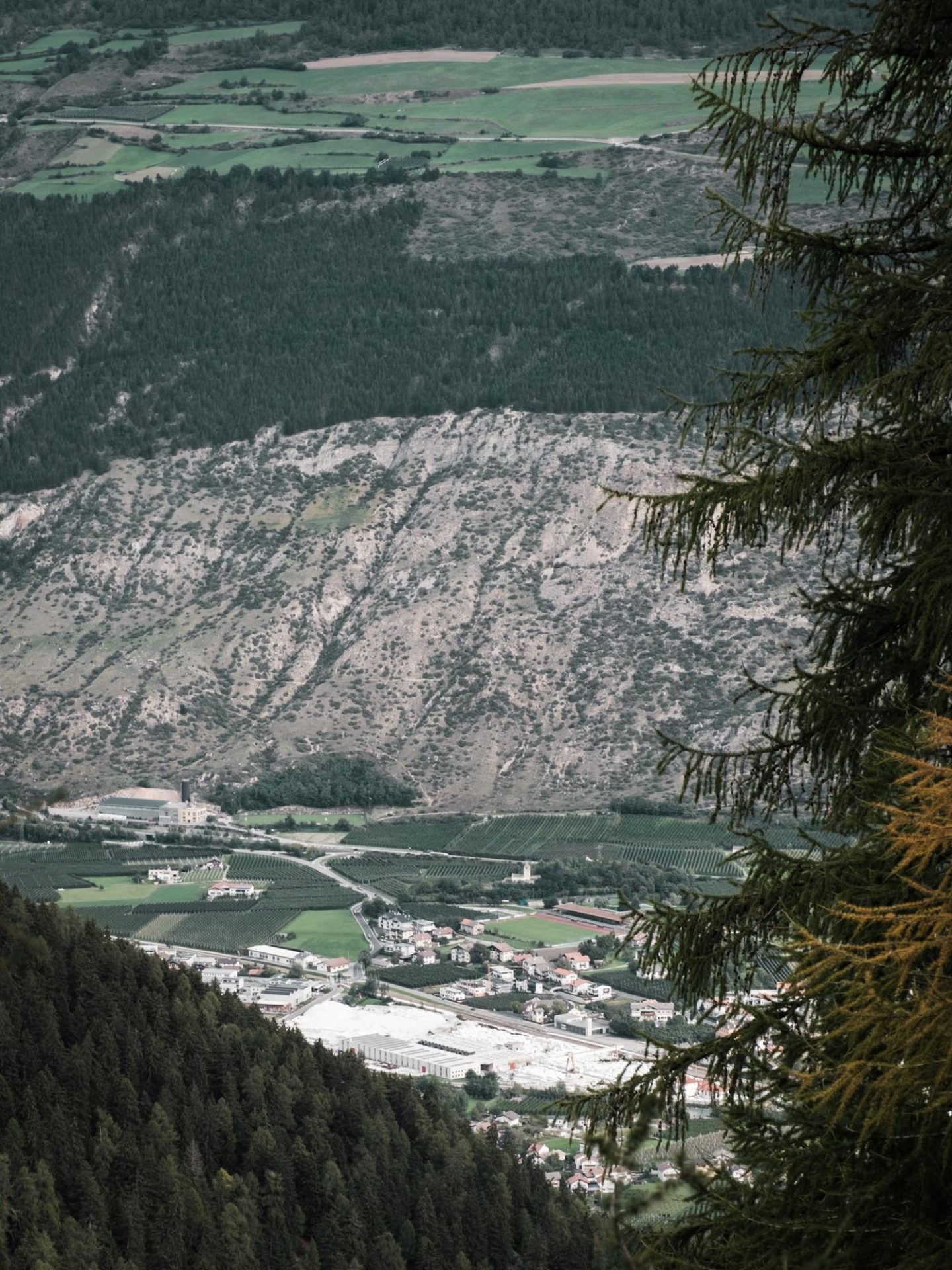
The view from the quarry. You can see Lasa Marmo from the distance.
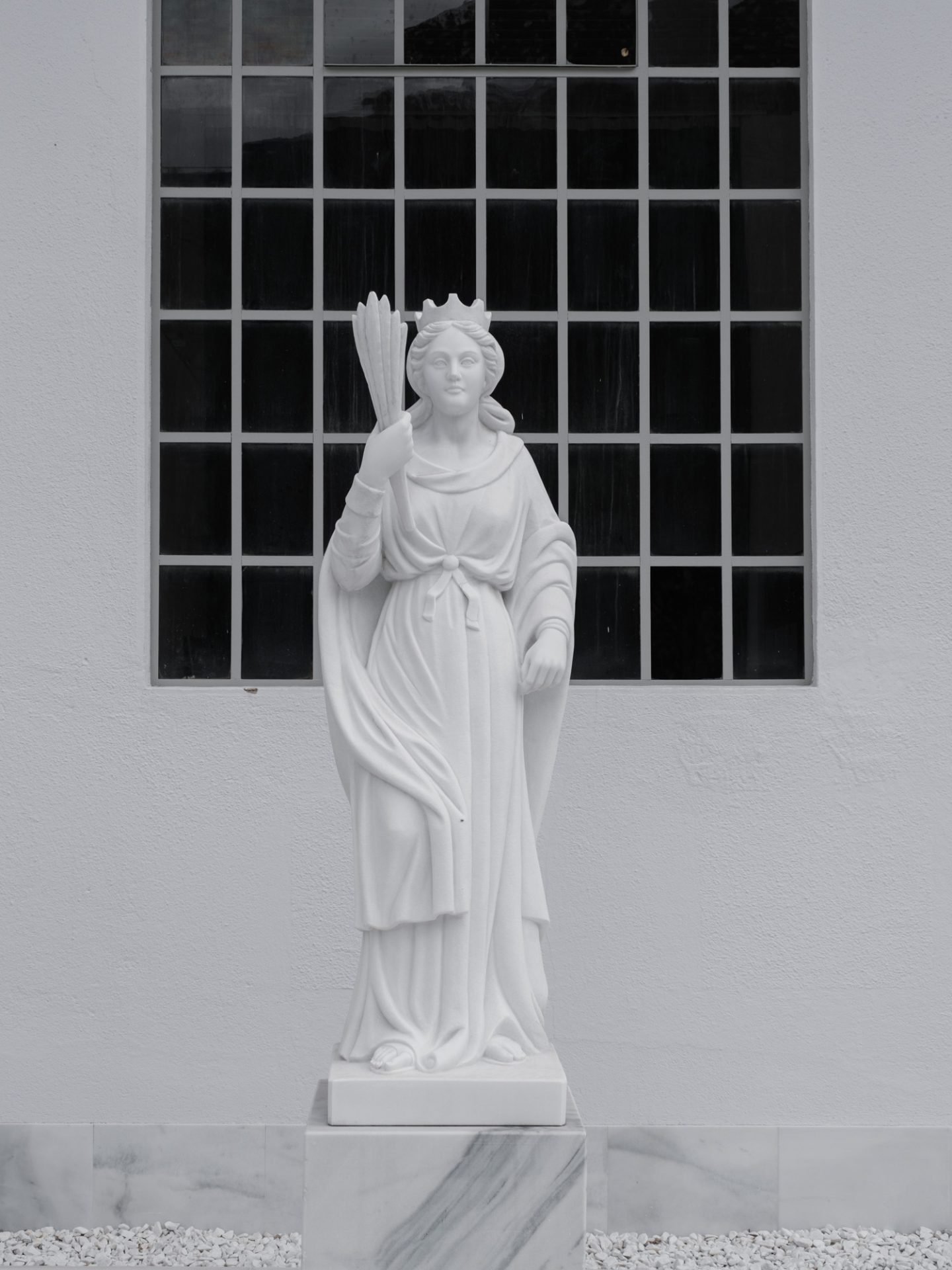
Marble has been used as a material for art and sculpture since ancient times.
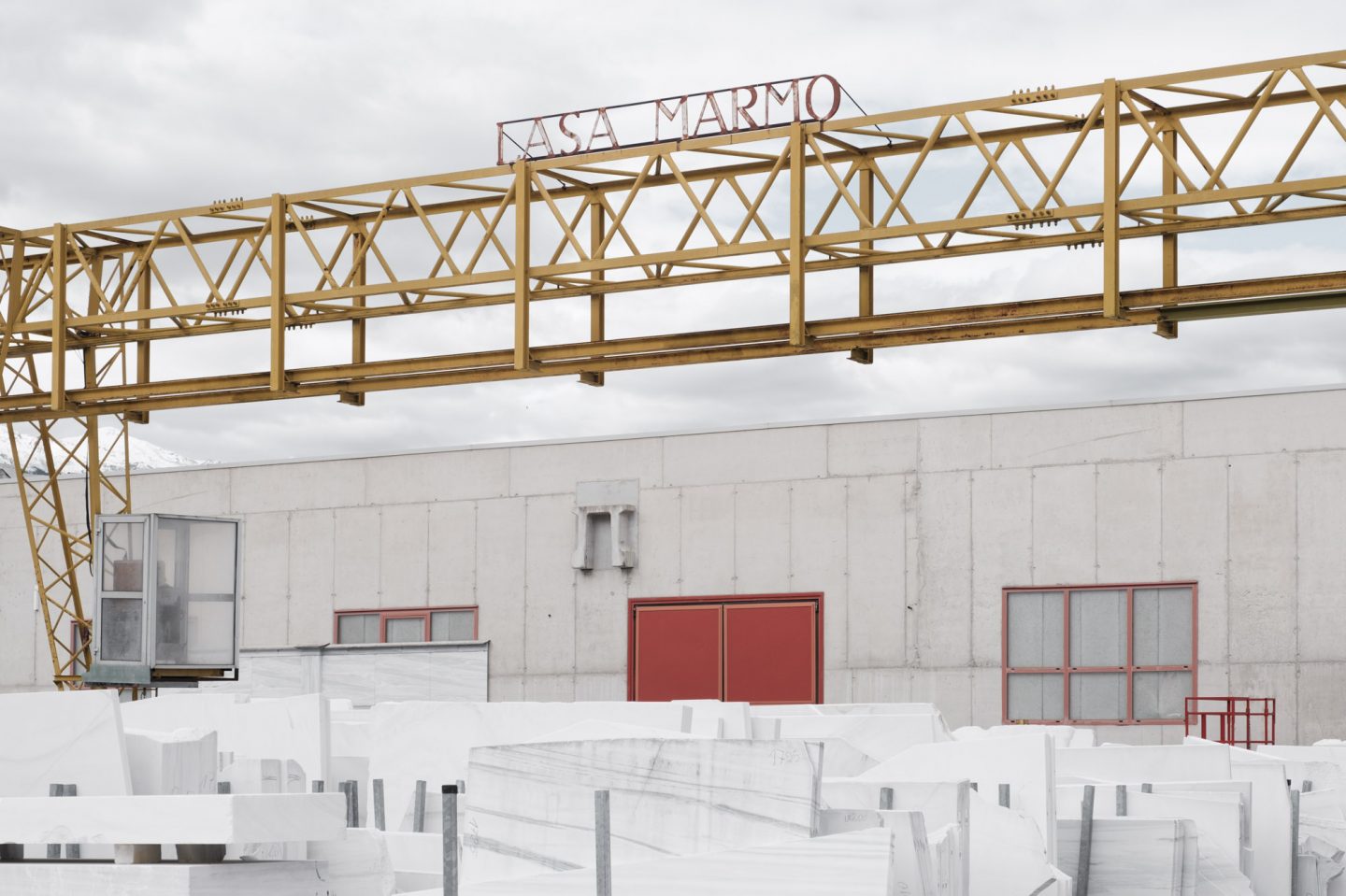
Slabs of pristine marble lie in racks outside the factory.
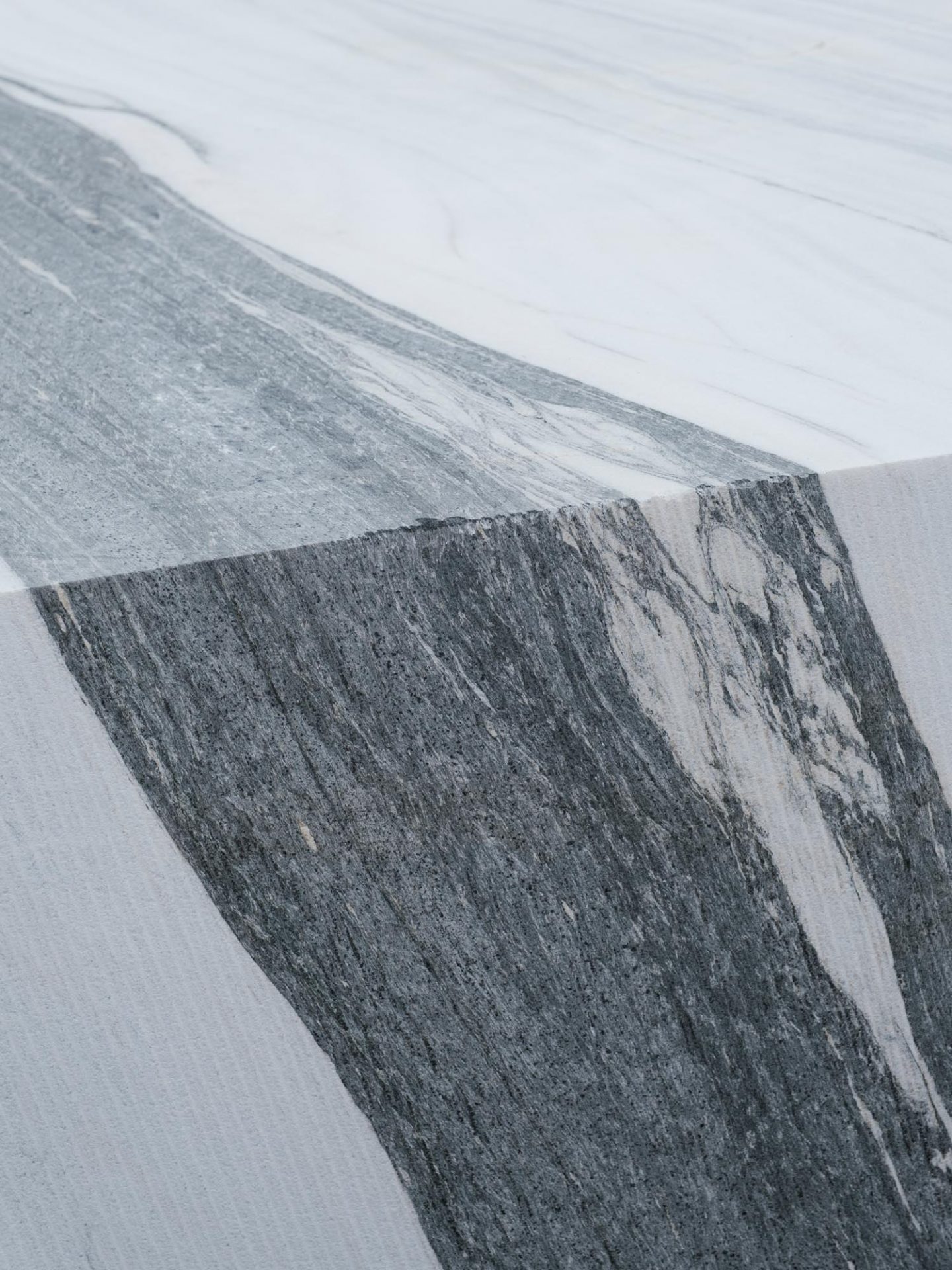
A veined marble variation from the LASA Venato line.
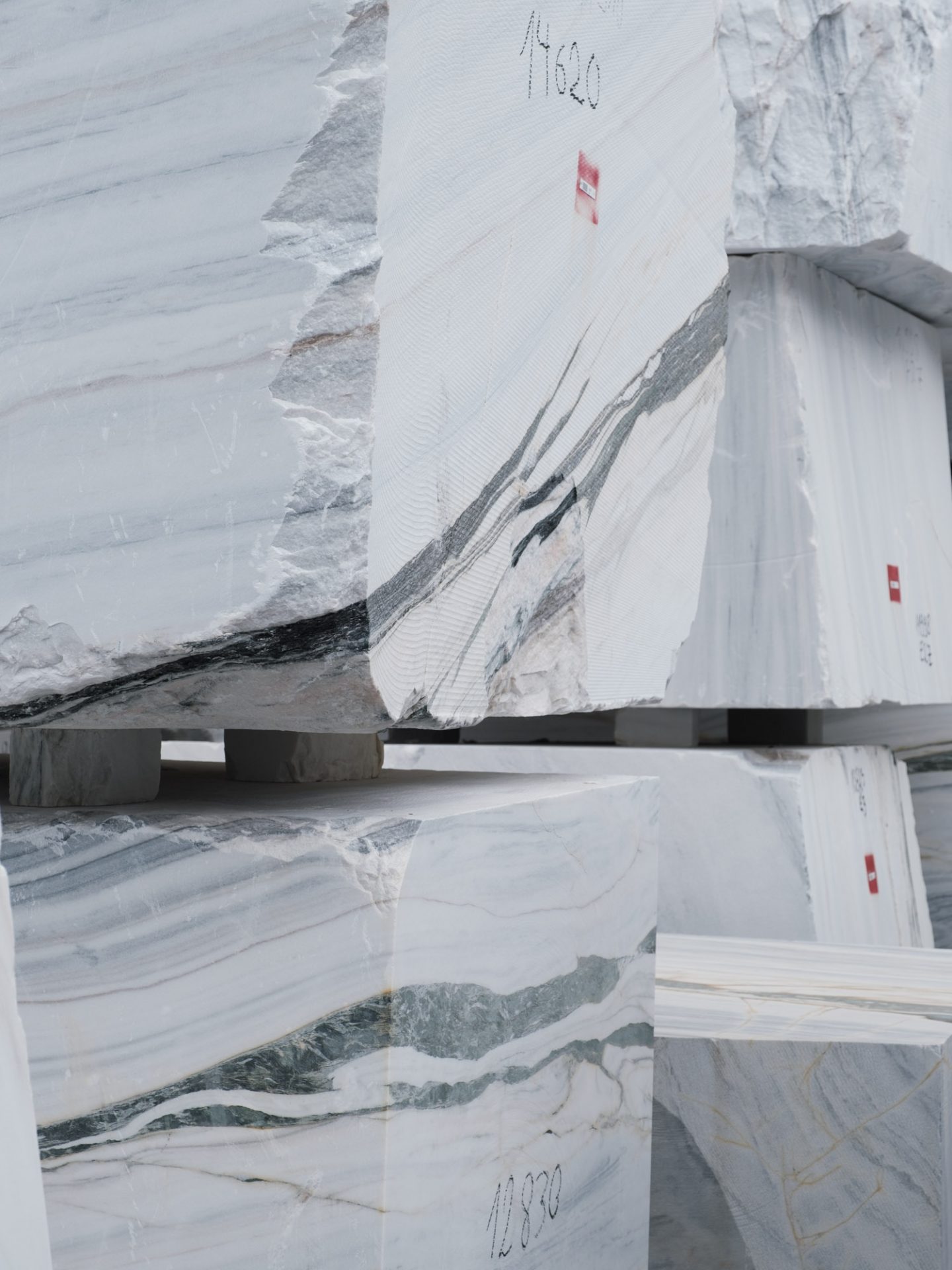
The highly crystalline structure of the marble gives it its exceptional hardness, durability, and sparkle.
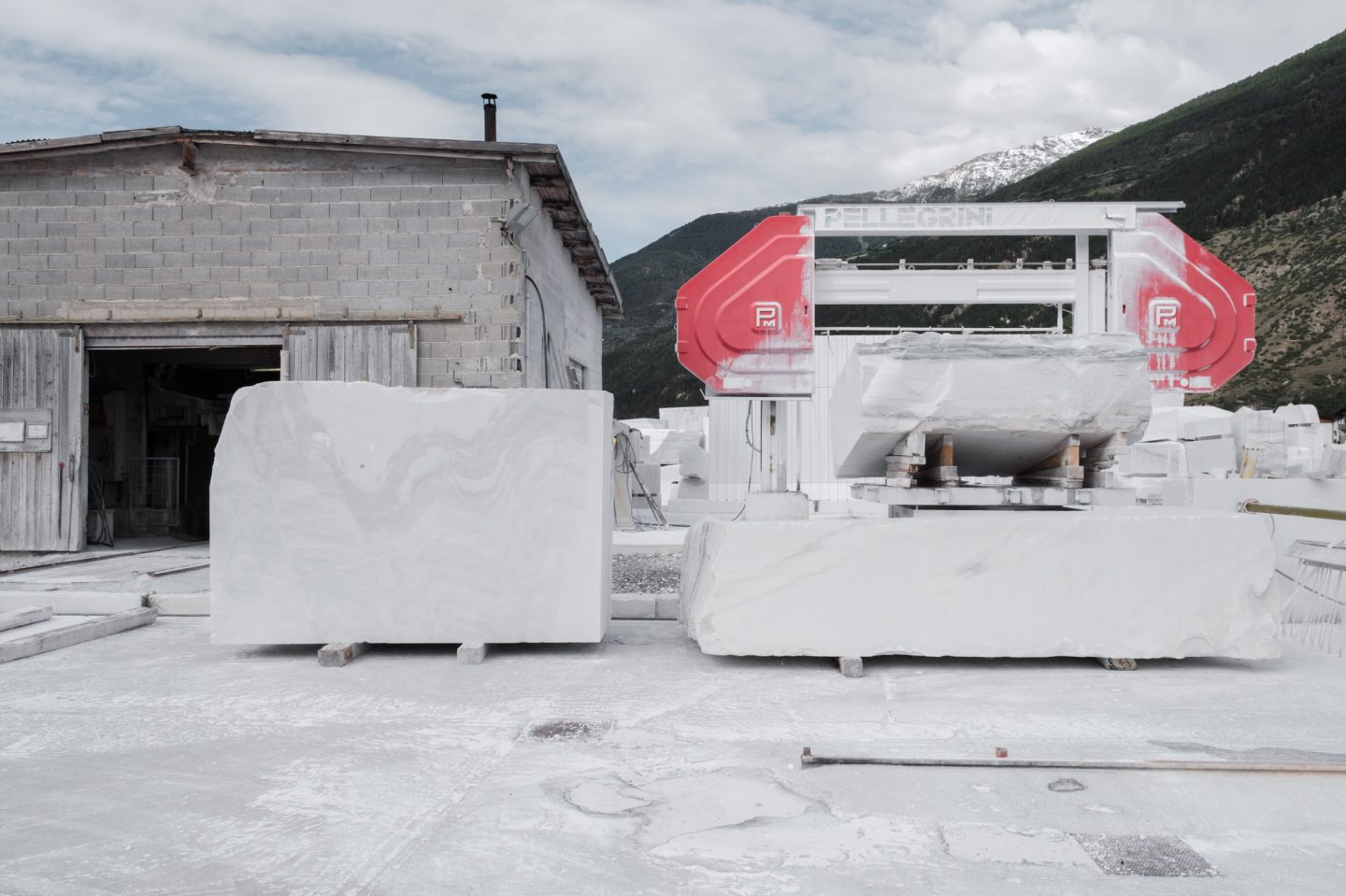
Large marble cutting machines carve the blocks into neat shapes.
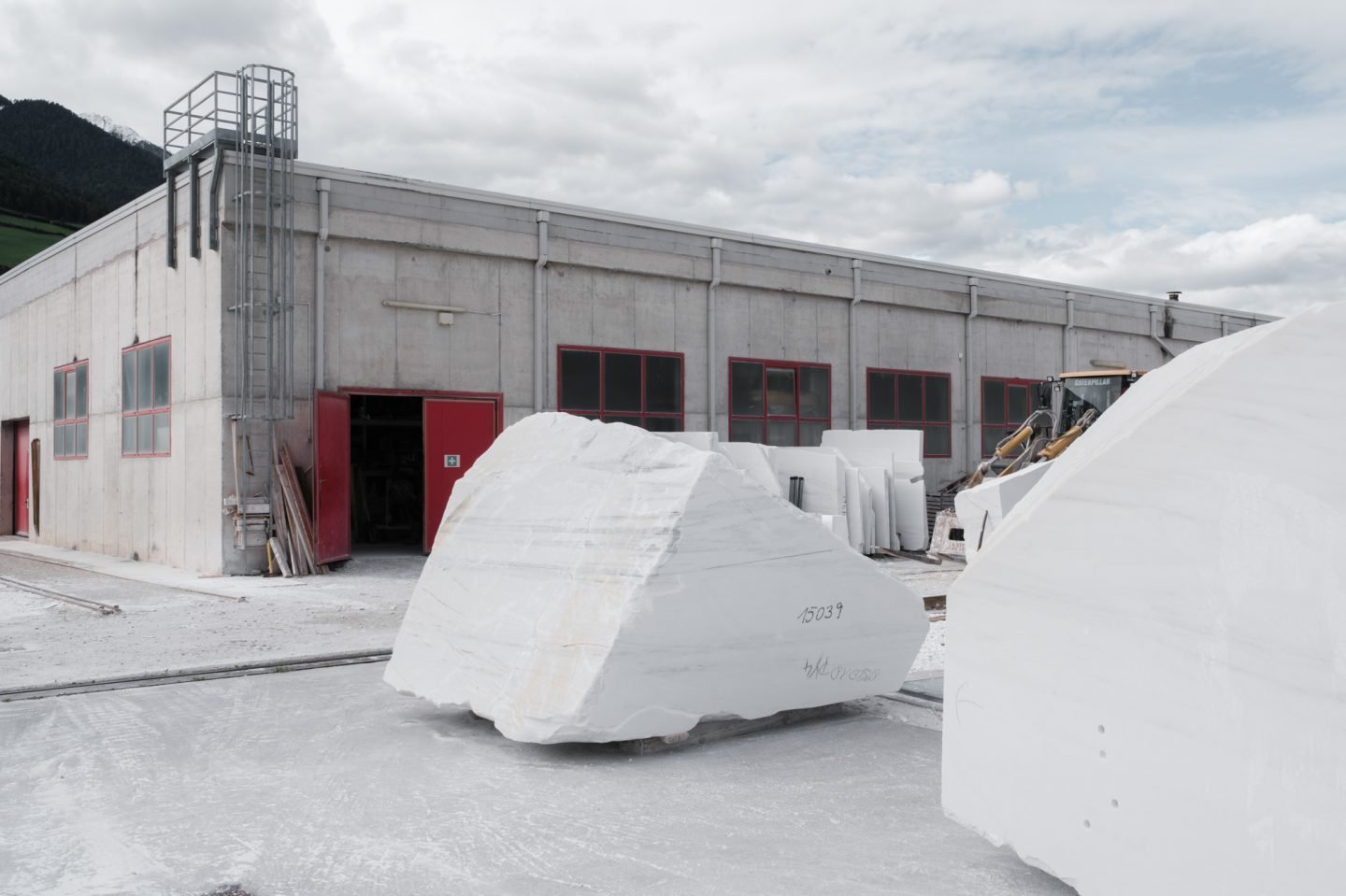
This particular marble has been used in the neoclassical architecture of large European cities like Vienna, Munich, and Berlin.
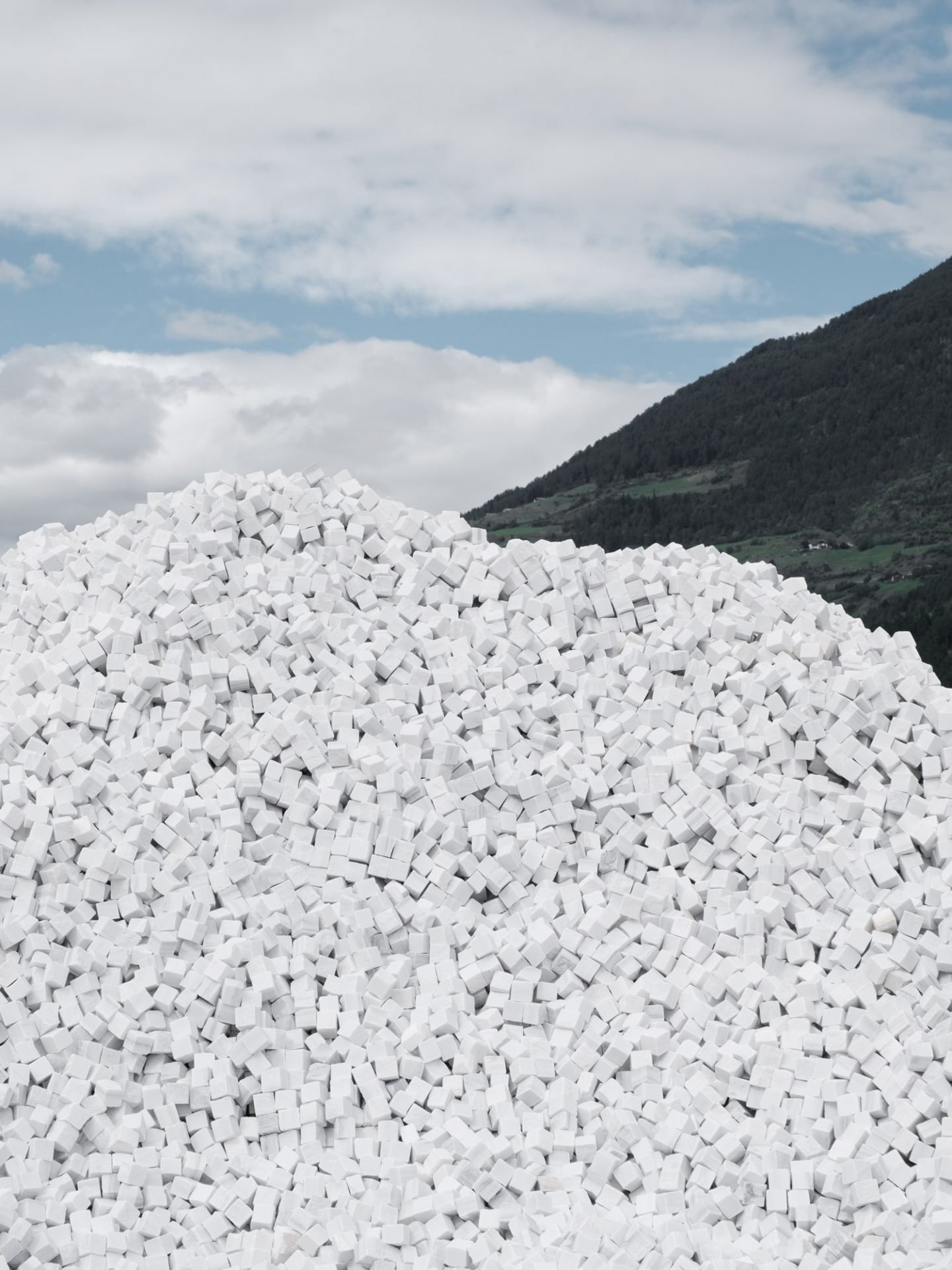
Tiny cubes of marble offcuts are used to line the floors of public spaces.
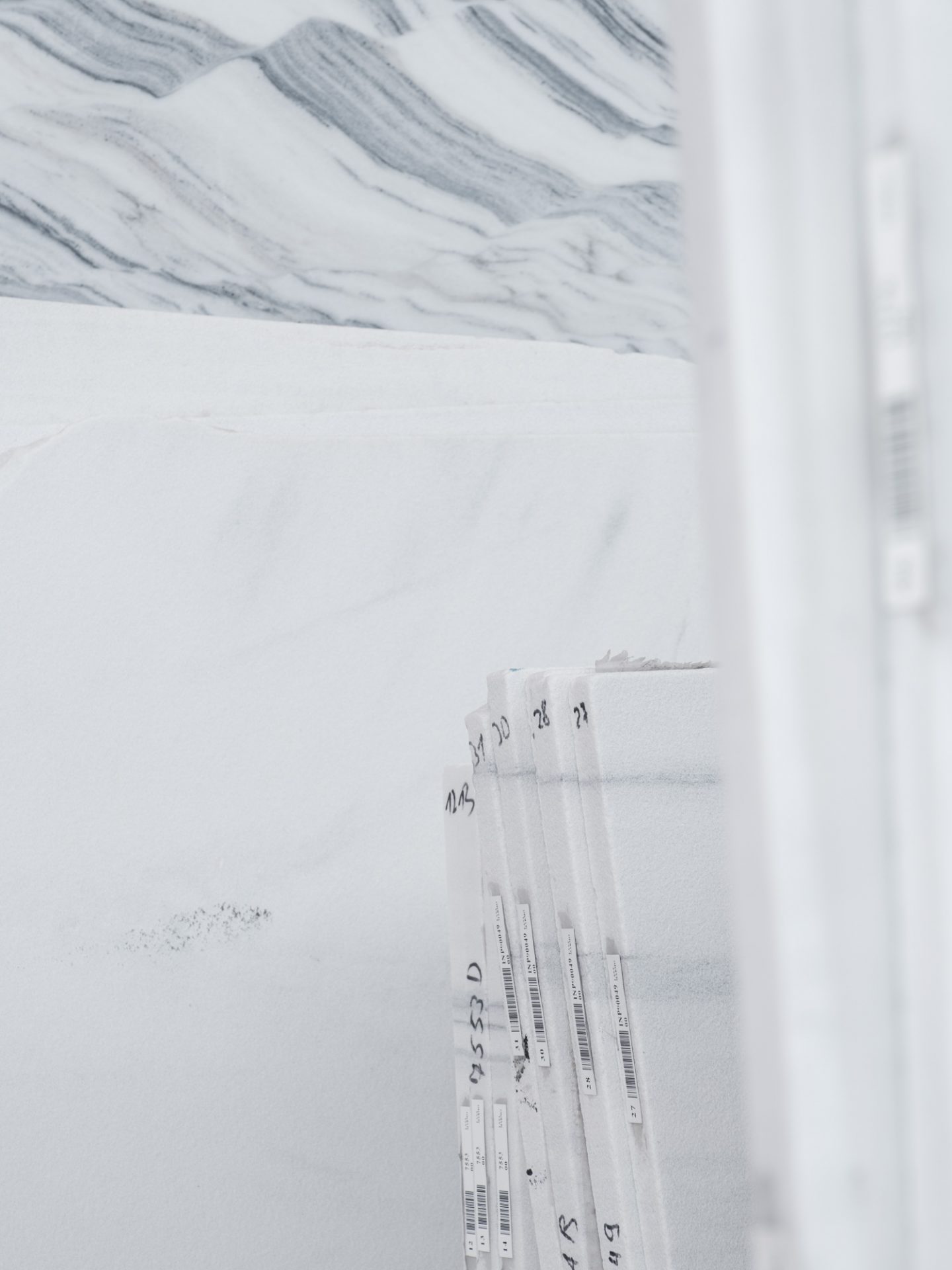
Every individual slab of Lasa Marmo marble is unique.
As demand increases, protecting the supply of this ancient material from vast mountains will be a challenge
Naturally, over the course of 90 years the manufacturing process and mining techniques have fundamentally changed: today, milder extracting machines and tools are used such as diamond wire saws and metal ‘pillows’. These pillows are filled with water; a highly delicate activity that creates pressure that cracks the marble out of the wall. The entry and exit of the quarry is through one small tunnel where all marble is extracted from, to minimize the disturbance of the natural landscape—if such a thing is possible. To get here, the roads leading up and down from the village of Laas have sharp turns and steep inclines. Away from tourists, it is a compelling and remote place to visit; a solitary and self-contained world of white that is industrial and natural at the same time. There is so much excess marble that the whole village of Laas is white—at times you have to wear sunglasses to protect your eyes from the marble’s brightness; even the pavement and sidewalks are made from offcuts.
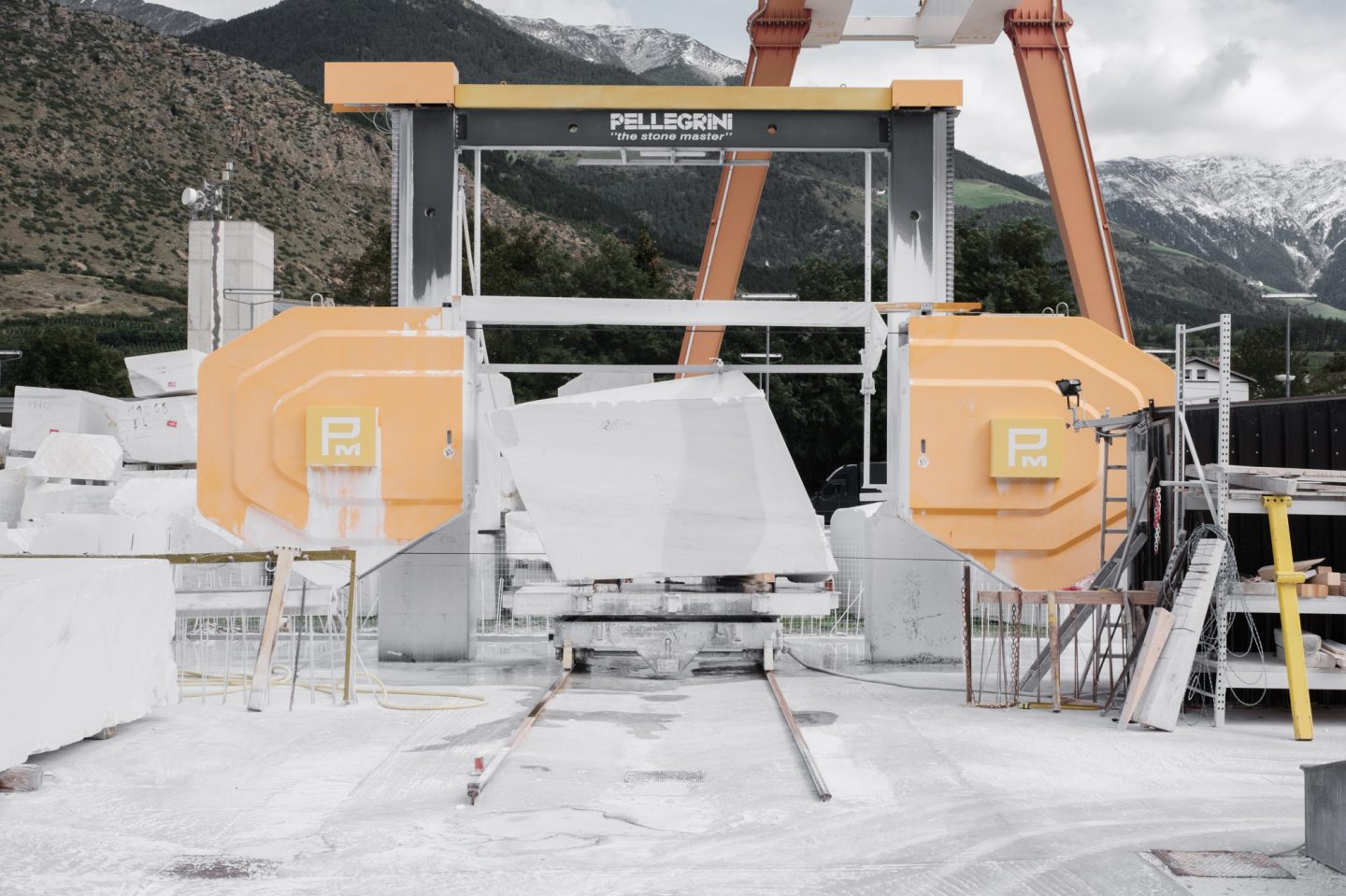
All of the marble cutting is done right here, amidst the mountains.
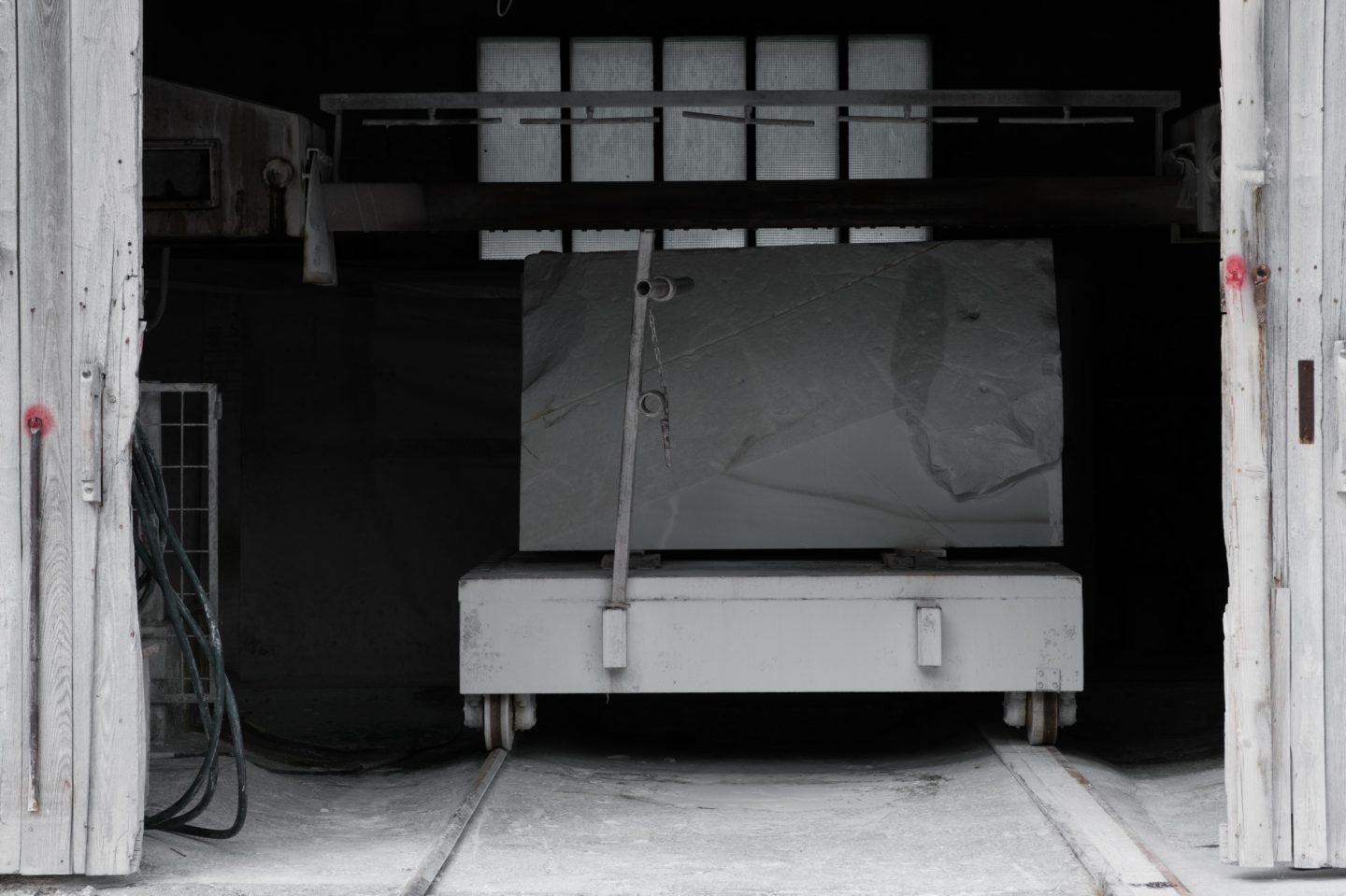
The marble is extremely heavy, so trolleys are used to transport the slabs.
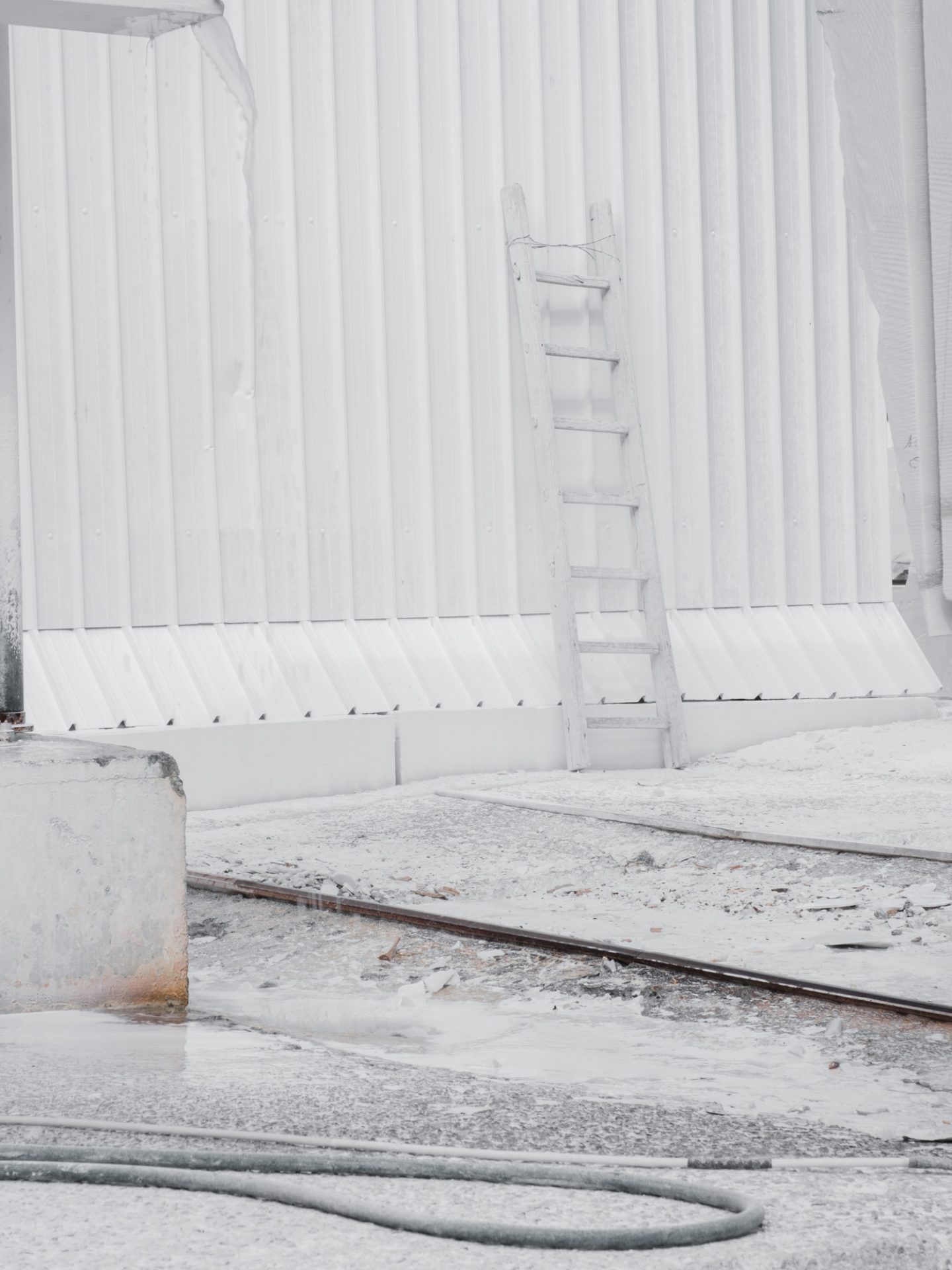
Cable car tracks, where workers used to bring the marble down the mountain via an old train.
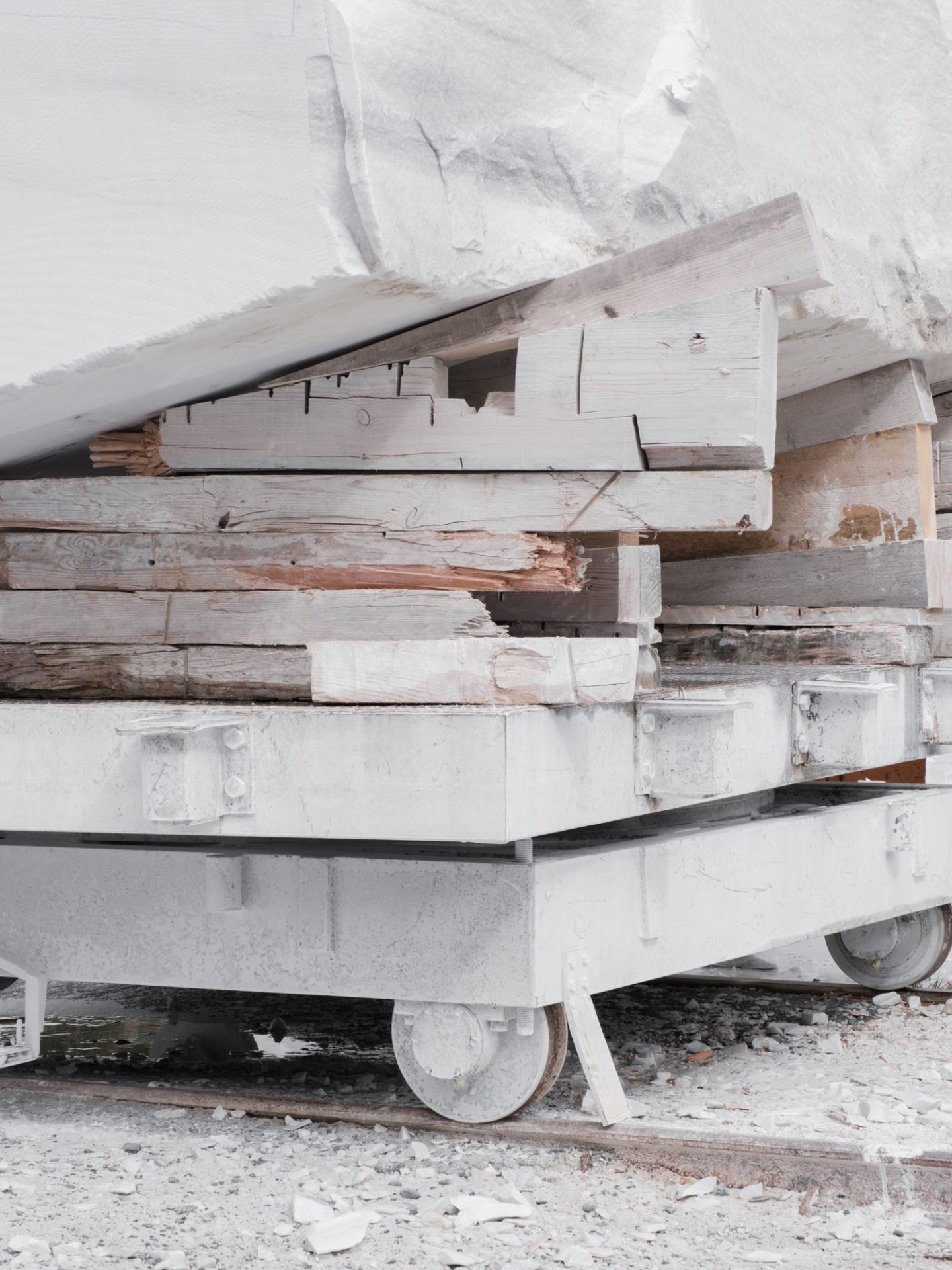
Materials from the site are used in resourceful ways.
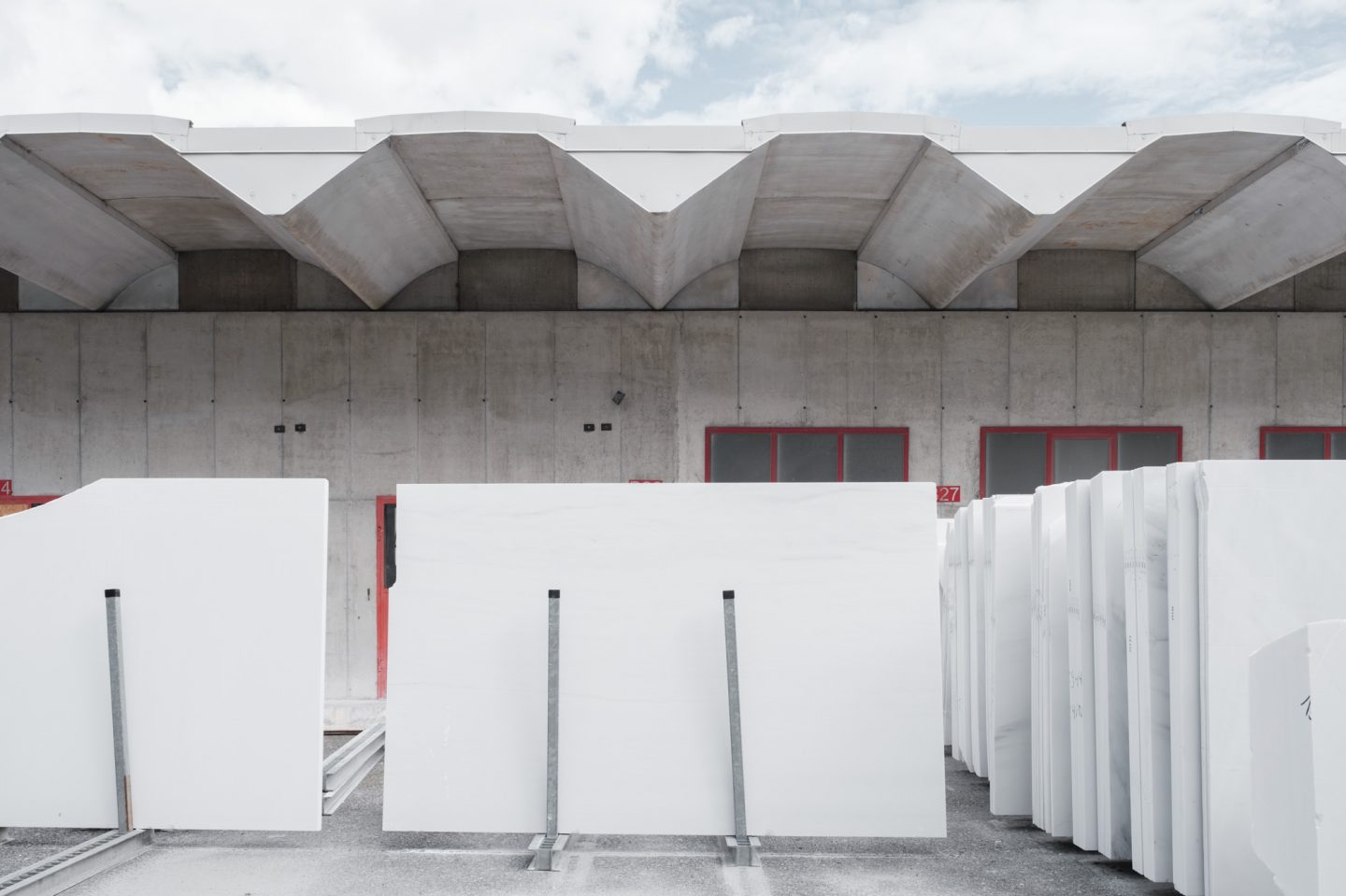
Slabs of marble are lined up so potential buyers and architects can decide what arrangements they should be in.
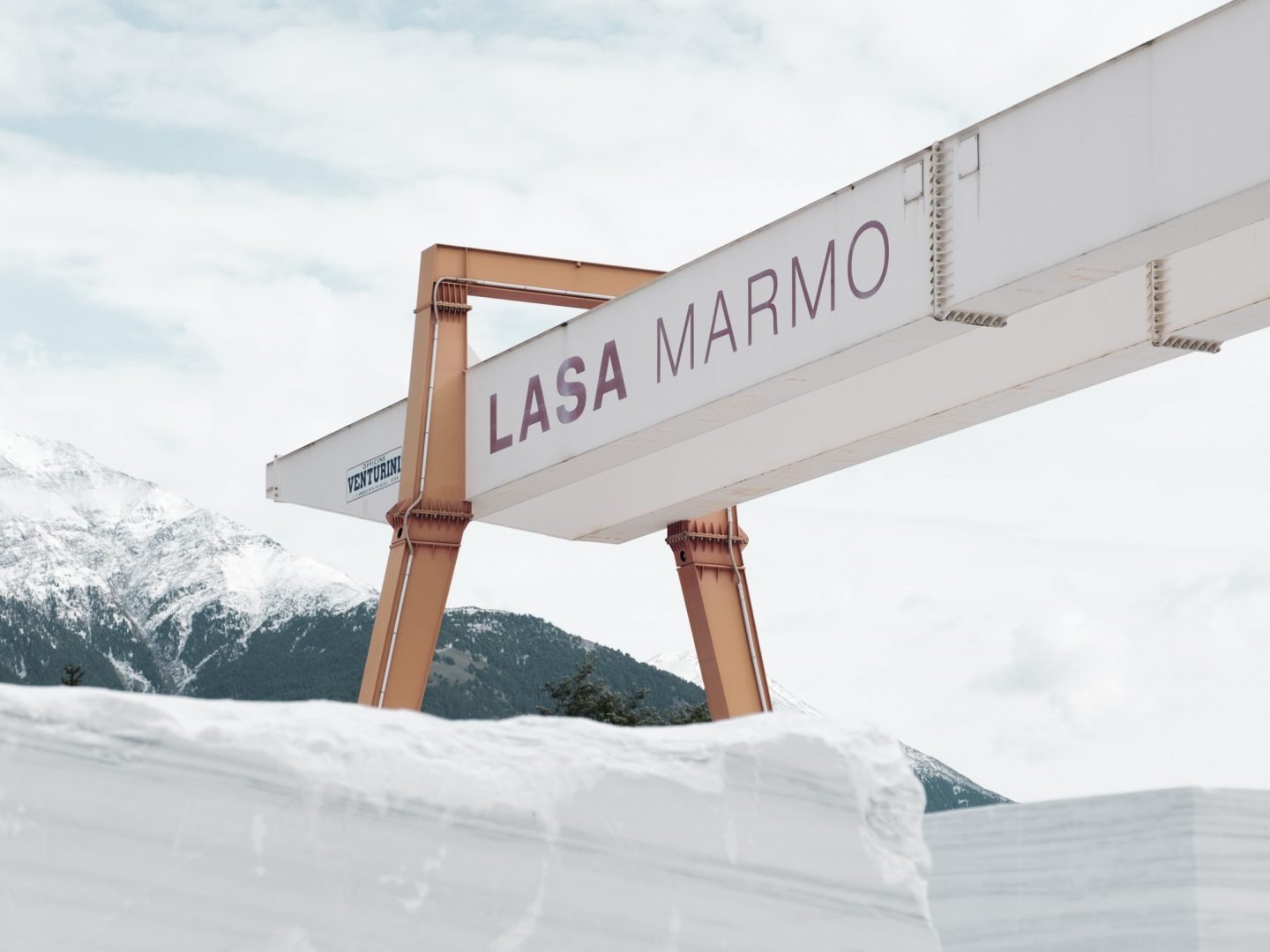
Over the course of 90 years the manufacturing process and mining techniques have fundamentally changed.
Like all of the earth’s natural resources, our supply of marble is finite—meaning at some point, we will use up all of the reserves in our pursuit for luxury. As demand continues to increase, protecting the supply of these ancient, fossilized bones from vast mountains will be a challenge for the next generation of Lasa Marmo stonemasons, as they work to impart knowledge in both theory and practice of their small-scale techniques of stone working. Beyond the safe extraction of marble and its environmentally friendly transportation, the company’s goals are to keep the ecosystem of the Stelvio National Park intact—an important objective as humanity continues to face new challenges with the climate crisis. In addition, the company mines exclusively underground, with minimal invasive intervention in nature, avoiding extracting in areas where the material is not usable. Ultimately however, the stone itself will outlive the current generation of workers extracting it—just as it endured through the eras of the ancient Romans and Michelangelo.
Produced in collaboration with Visit South Tyrol.
All images © Clemens Poloczek for IGNANT production
Text: Steph Wade
